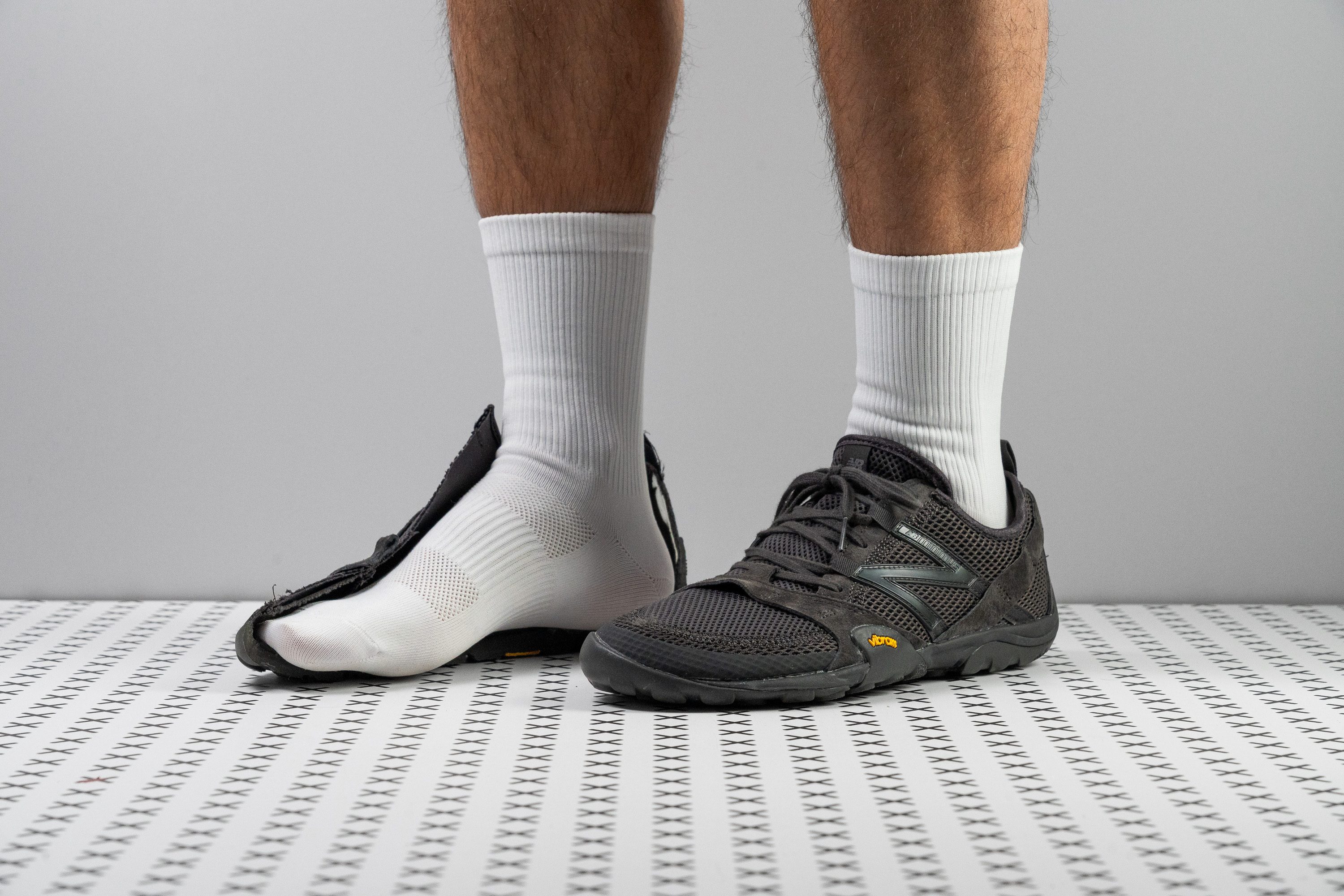Our verdict
- Top pick in best New Balance trail running shoes
Pros
- Super-flexible build
- Good durability
- Low stack height
- Sock-like comfortable upper
- Cushioned heel
- Great value
- Works for road and trail running
Cons
- Limited toe splay
- Non-removable insole reduces customization
- Lacks a zero-drop geometry
- Poor traction
Audience verdict
- Top 29% most popular running shoes
Comparison
The most similar running shoes compared
+ + Add a shoe | |||||
|---|---|---|---|---|---|
| Audience score | 85 Good! | 88 Great! | 84 Good! | 73 Bad! | |
| Price | $110 | $150 | $120 | $120 | |
| Trail terrain | Light | Light | Light | Light | |
| Arch support | Neutral | Neutral | Neutral | Neutral | |
| Weight lab Weight brand | 7.1 oz / 200g 7.2 oz / 204g | 9.2 oz / 261g 9.2 oz / 260g | 7.8 oz / 221g 9 oz / 255g | 7.5 oz / 213g 7.9 oz / 224g | |
| Lightweight | ✓ | ✗ | ✓ | ✓ | |
| Drop lab Drop brand | 5.0 mm 4.0 mm | -0.1 mm 0.0 mm | 0.1 mm 0.0 mm | 5.2 mm 4.0 mm | |
| Strike pattern | Mid/forefoot | Mid/forefoot | Mid/forefoot | Mid/forefoot | |
| Size | Slightly small | True to size | True to size | Slightly small | |
| Midsole softness | Firm | Firm | Balanced | Soft | |
| Difference in midsole softness in cold | Small | Small | Normal | Big | |
| Toebox durability | Very good | Decent | Decent | Very good | |
| Heel padding durability | Decent | Decent | Bad | Good | |
| Outsole durability | Good | Decent | Decent | Good | |
| Breathability | Moderate | Breathable | Moderate | Moderate | |
| Width / fit | Narrow | Medium | Medium | Narrow | |
| Toebox width | Medium | Wide | Wide | Medium | |
| Stiffness | Flexible | Moderate | Moderate | Flexible | |
| Torsional rigidity | Flexible | Flexible | Flexible | Flexible | |
| Heel counter stiffness | Flexible | Flexible | Flexible | Flexible | |
| Lug depth | ✗ | 2.7 mm | 2.5 mm | 3.3 mm | |
| Heel stack lab Heel stack brand | 15.6 mm 14.0 mm | 16.3 mm 15.0 mm | 16.1 mm 14.0 mm | 19.5 mm | |
| Forefoot lab Forefoot brand | 10.6 mm 10.0 mm | 16.4 mm 15.0 mm | 16.0 mm 14.0 mm | 14.3 mm | |
| Widths available | Normal | NormalWide | Normal | NormalWide | |
| Season | All seasons | SummerAll seasons | All seasons | All seasons | |
| Removable insole | ✗ | ✓ | ✗ | ✗ | |
| Orthotic friendly | ✗ | ✓ | ✗ | ✗ | |
| Ranking | #206 Bottom 44% | #119 Top 33% | #225 Bottom 38% | #360 Bottom 2% | |
| Popularity | #105 Top 29% | #336 Bottom 8% | #163 Top 45% | #221 Bottom 39% |
Who should buy
We tested the New Balance MT10 thoroughly, and we believe it's a great match for:
- Runners who love minimalist footwear and need a versatile, road-to-trail option that keeps things simple but functional.
- Those with slim feet who often find barefoot shoes too roomy and prefer a more classic, narrower fit.
- Anyone transitioning into barefoot shoes who still wants a touch of underfoot cushioning.
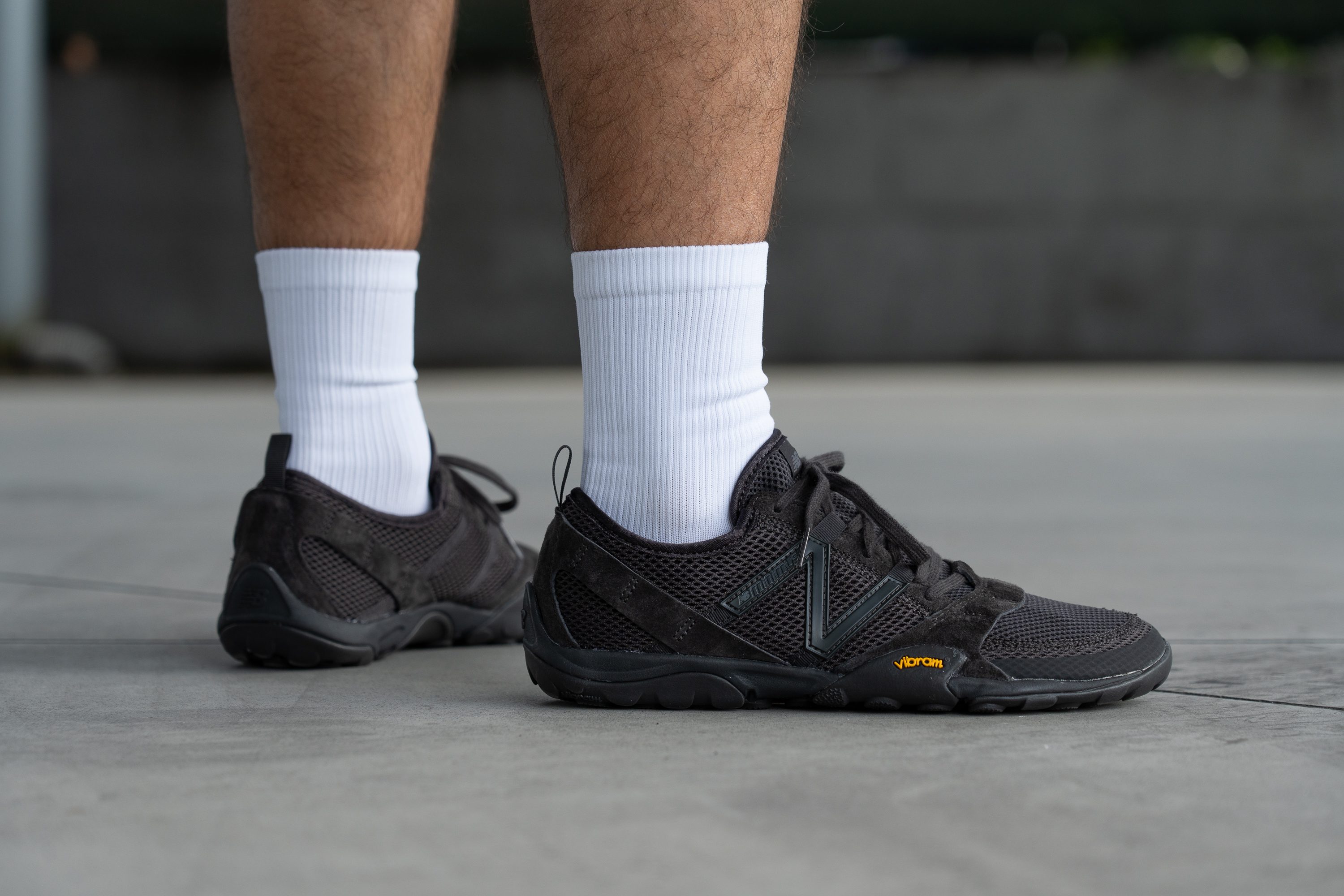
Who should NOT buy
We found that the MT10 misses the mark for those chasing a natural ride—its 5.0 mm offset may disappoint purists seeking a truly flat feel. If that’s you, we suggest the Merrell Trail Glove 7 as a zero-drop alternative.
From our perspective, the tapered, traditional toebox will be another letdown for some. It lacks the foot-shaped spaciousness many minimalist fans love. We recommend checking the Xero Shoes Scrambler Low instead—it features a roomy forefoot and a Michelin outsole, making it a better fit for wider feet and natural foot splay.
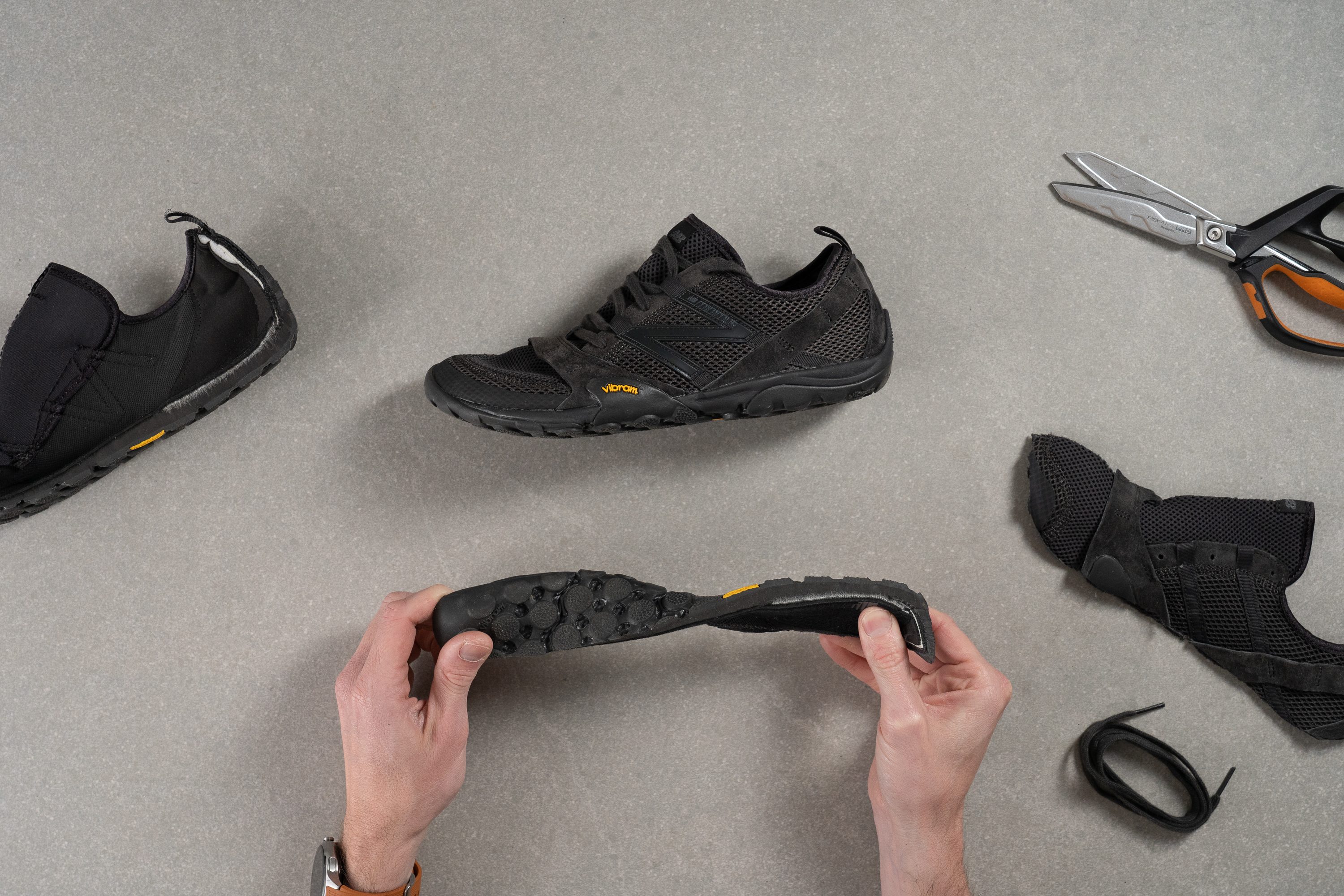
Cushioning
Shock absorption
As expected, we found minimal shock absorption at just 61 SA—which is exactly what we wanted from a minimalist shoe. While most running shoes on the market aim for the opposite, we’re glad the MT10 stayed true to its purpose with such a low score.
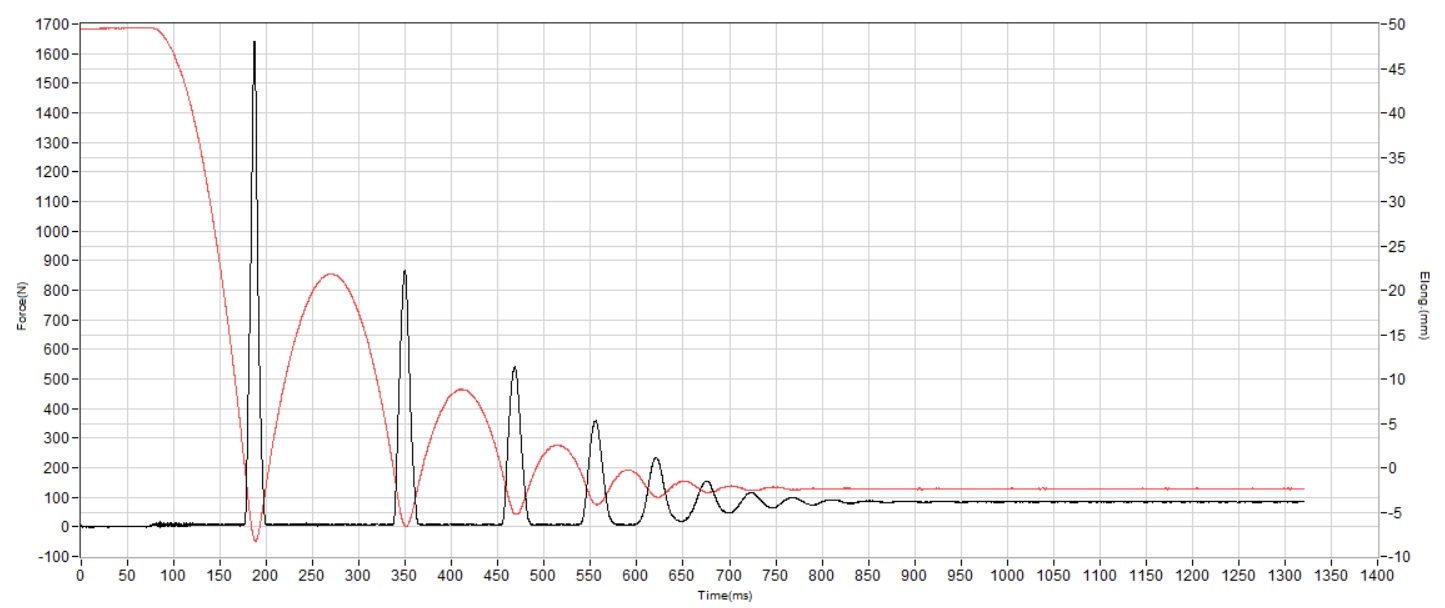
| MT10 | 61 SA |
| Average | 122 SA |
Energy return
Energy return is also low at just 49.1%, but that’s no surprise. There simply isn’t enough foam to create a bouncy ride, and you won’t find that in any running shoe with a low-stack midsole either.
| MT10 | 49.1% |
| Average | 55.6% |
Heel stack
The New Balance MT10 is a true minimalist running shoe with just 15.6 mm in the heel, yet it still includes a slim midsole for light protection. In our view, it strikes a nice middle ground between ground-feel and long-distance comfort, especially for extended mountain sessions.
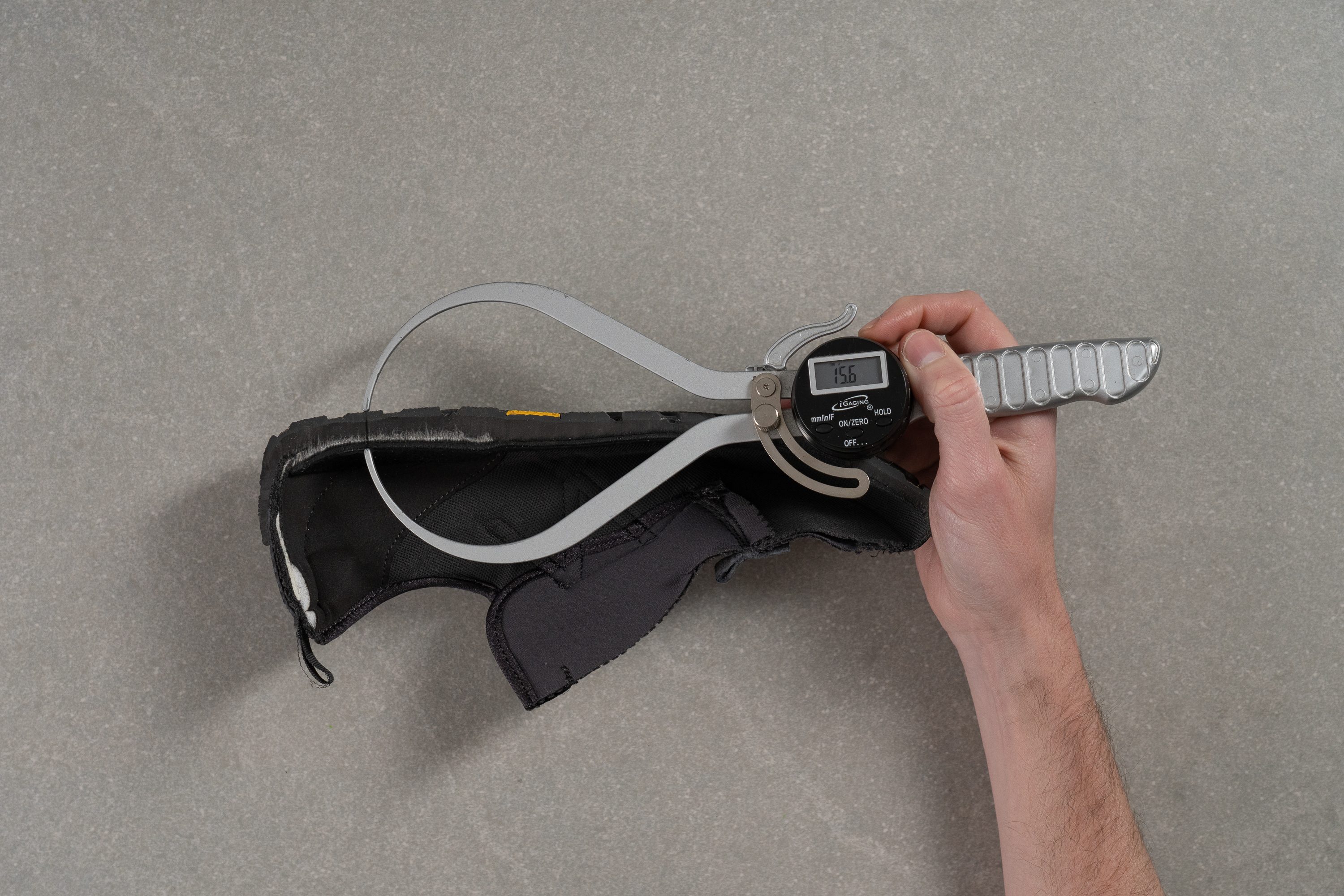
| MT10 | 15.6 mm |
| Average | 32.6 mm |
Forefoot stack
The forefoot comes with less stack height at just 10.6 mm, which we clearly felt during our field test of the MT10. By the way, the name stands for “Minimus Trail 10” and keeps the spirit of this barefoot-inspired series from New Balance alive.
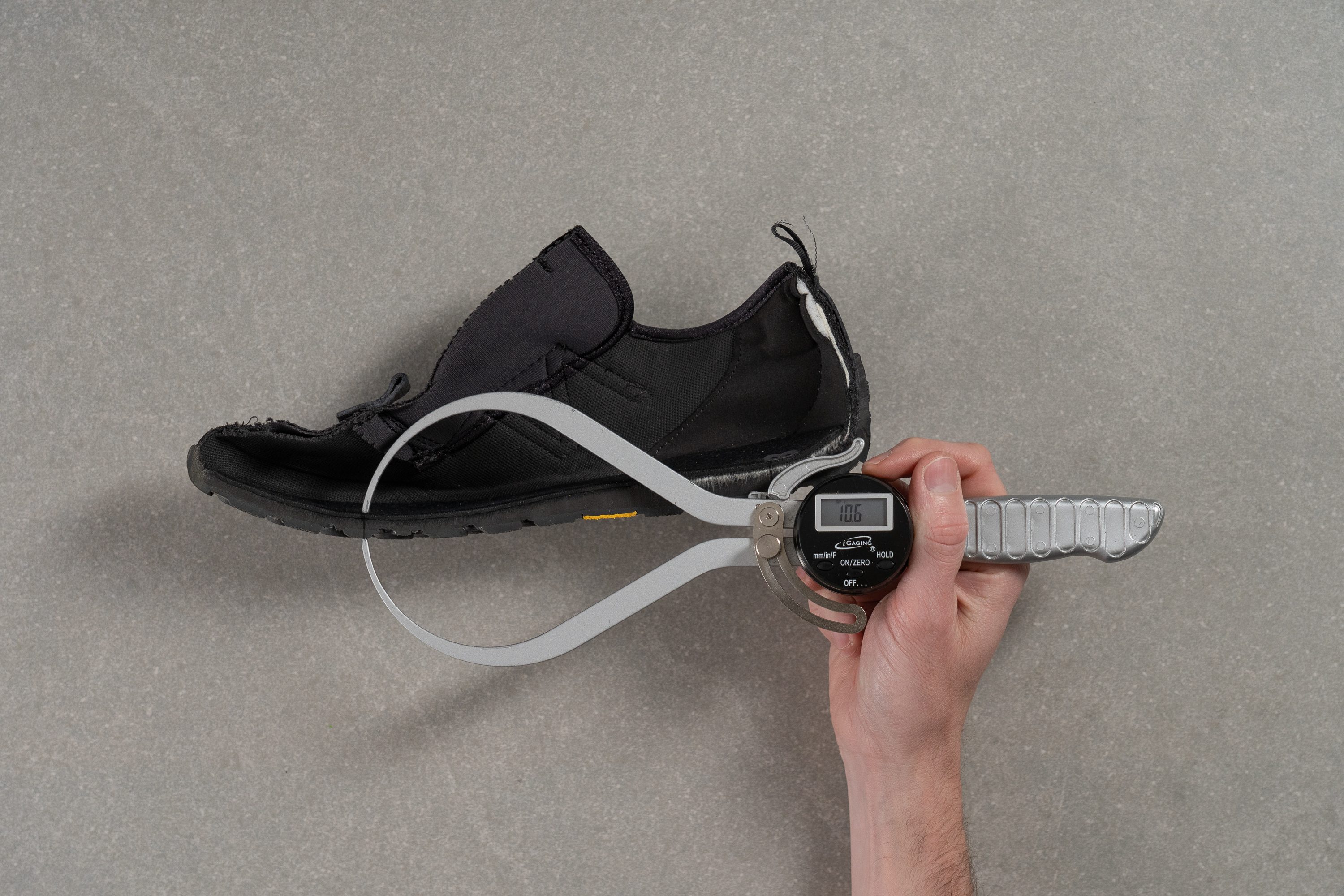
| MT10 | 10.6 mm |
| Average | 25.1 mm |
Drop
The advertised drop of this shoe is 4.0 mm, but we measured a real drop of 5.0 mm. That’s such a tiny change—about the width of a few human hairs—that it’s impossible to feel underfoot.
The MT10 is built for trails, but it can also handle city walks with no issues.
However, we believe that this drop might deter zero-drop purists. New Balance follows a low-drop setup rather than going fully flat, and that’s something to keep in mind when considering the MT10.
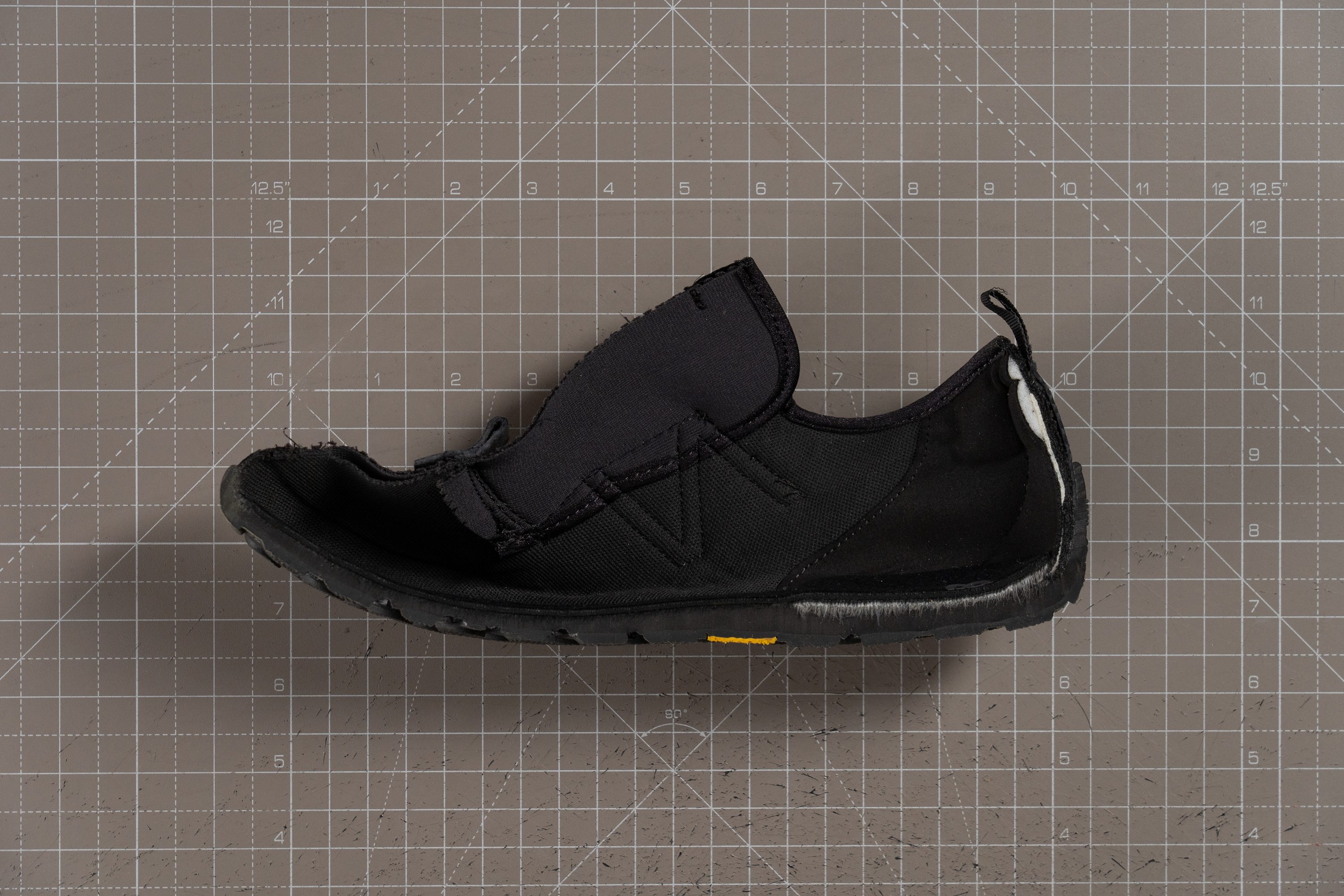
| MT10 | 5.0 mm |
| Average | 7.6 mm |
Midsole softness
Having such a paper-thin midsole, it simply couldn't be soft—it would bottom out too fast, and durability would take a serious hit. That’s why a firm setup makes sense for minimalist shoes like this.
The firm EVA layer we tested delivered a 34.4 HA reading—one of the highest we've recorded in the lab. While this would feel too harsh in most shoes, we believe it’s the right choice for the MT10’s ground-connected design.
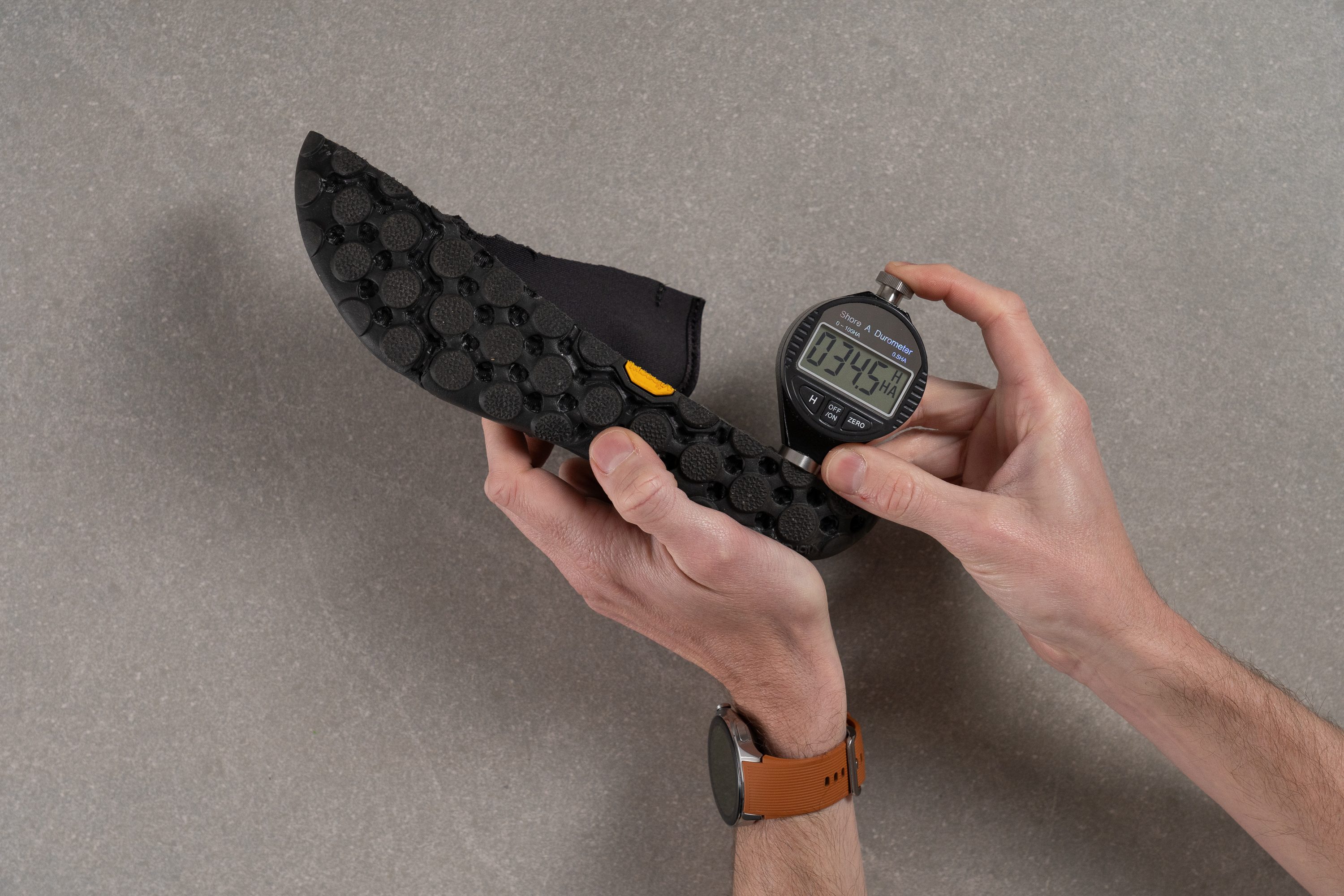
| MT10 | 34.4 HA |
| Average | 21.9 HA |
Rocker
Like most minimalist running shoes, the MT10 uses a barely-there rocker with a light toe-off that helps during runs and walks. Just don’t expect any dramatic motion—it’s more of a subtle push than a rolling ride.
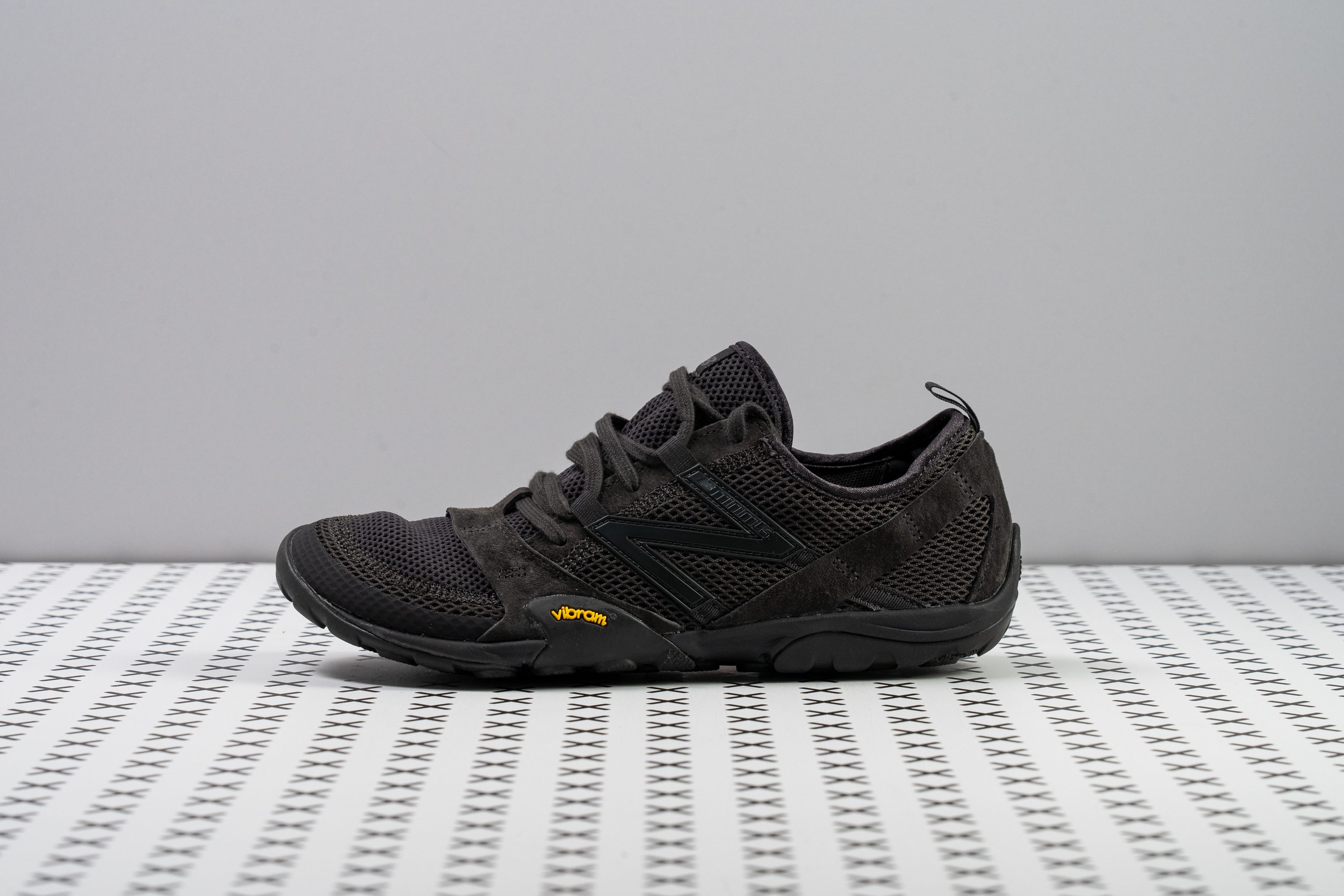
There’s also almost no rear bevel—just a small human-shaped curve that mimics your calcaneus bone.
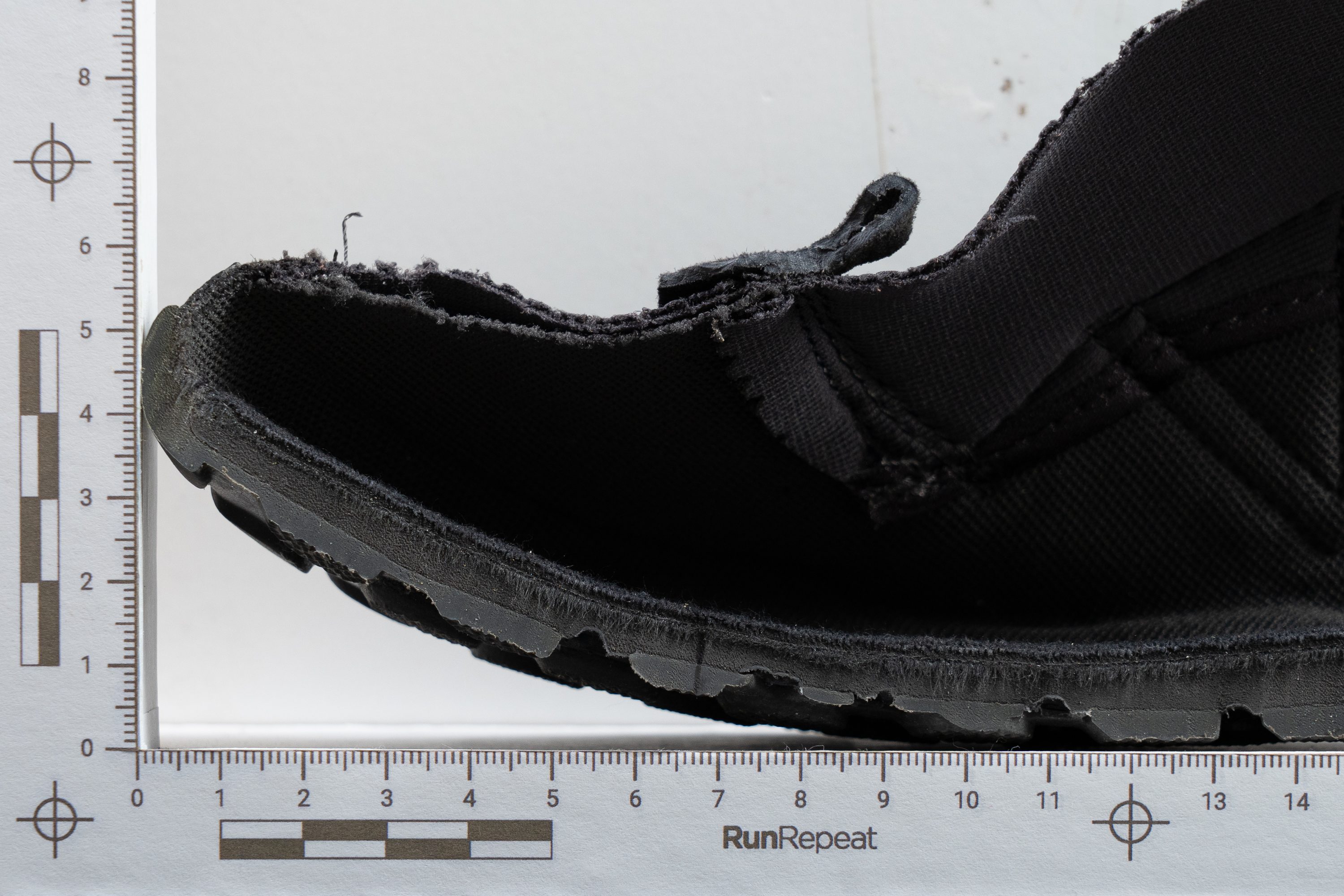
Size and fit
Size
New Balance MT10 fits slightly small (28 votes).
Width / Fit
Most minimalist shoes are wide and shaped like a human foot—but not the MT10. New Balance went with a more traditional last that feels noticeably narrower than the ultra-roomy design used in barefoot shoes.
With our 1:1 gel mold of the shoe's interiors, we proved that the MT10 offers a compact and snug fit. We measured just 91.8 mm at the widest part, making it one of the narrowest minimalist shoes we’ve ever analyzed. We think it's ideal for those with narrow or average feet.
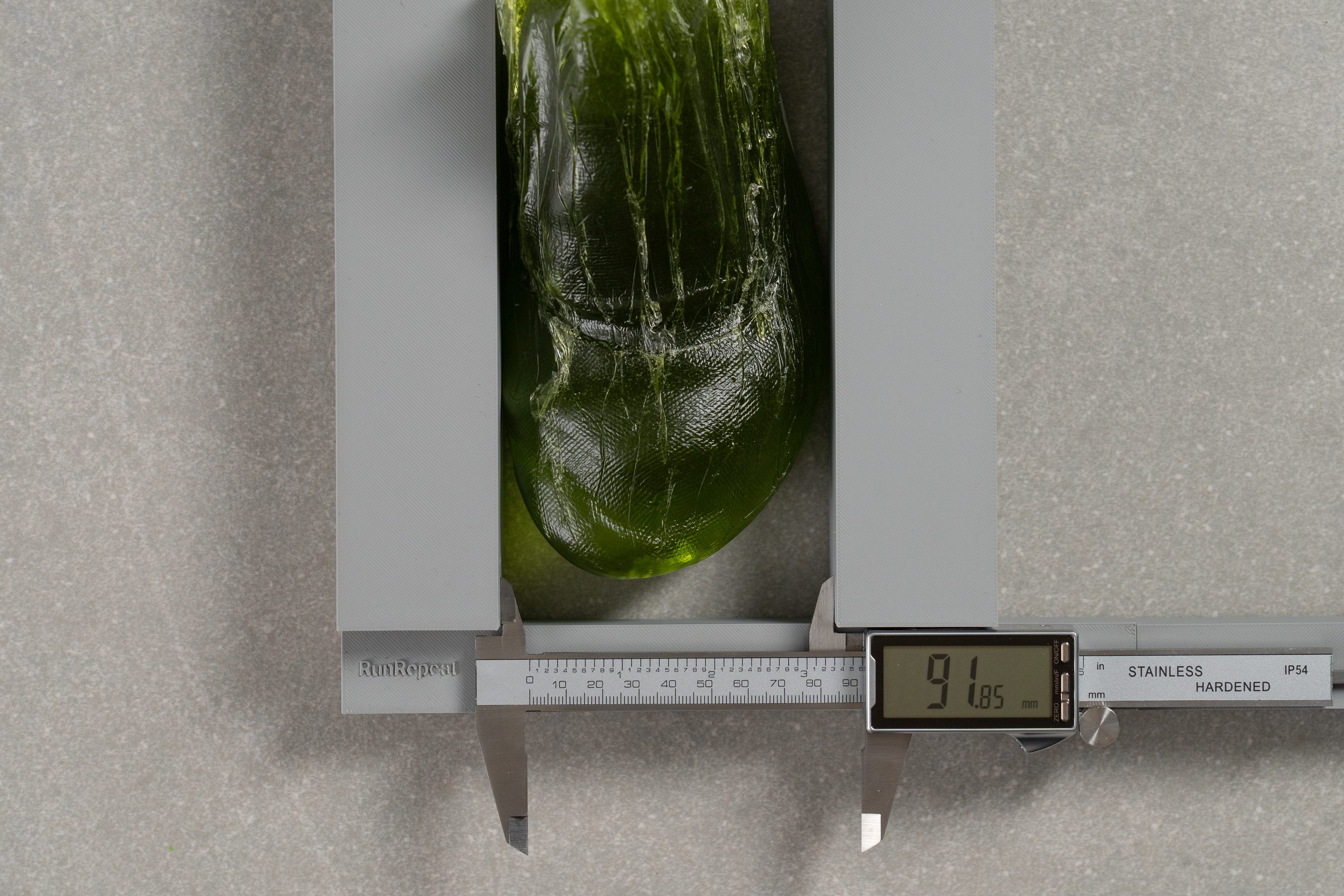
| MT10 | 91.8 mm |
| Average | 95.6 mm |
Toebox width
While the ball of the foot feels a bit snugger than most shoes, the big toe area stays fairly standard (75.0 mm) with an average-shaped taper.
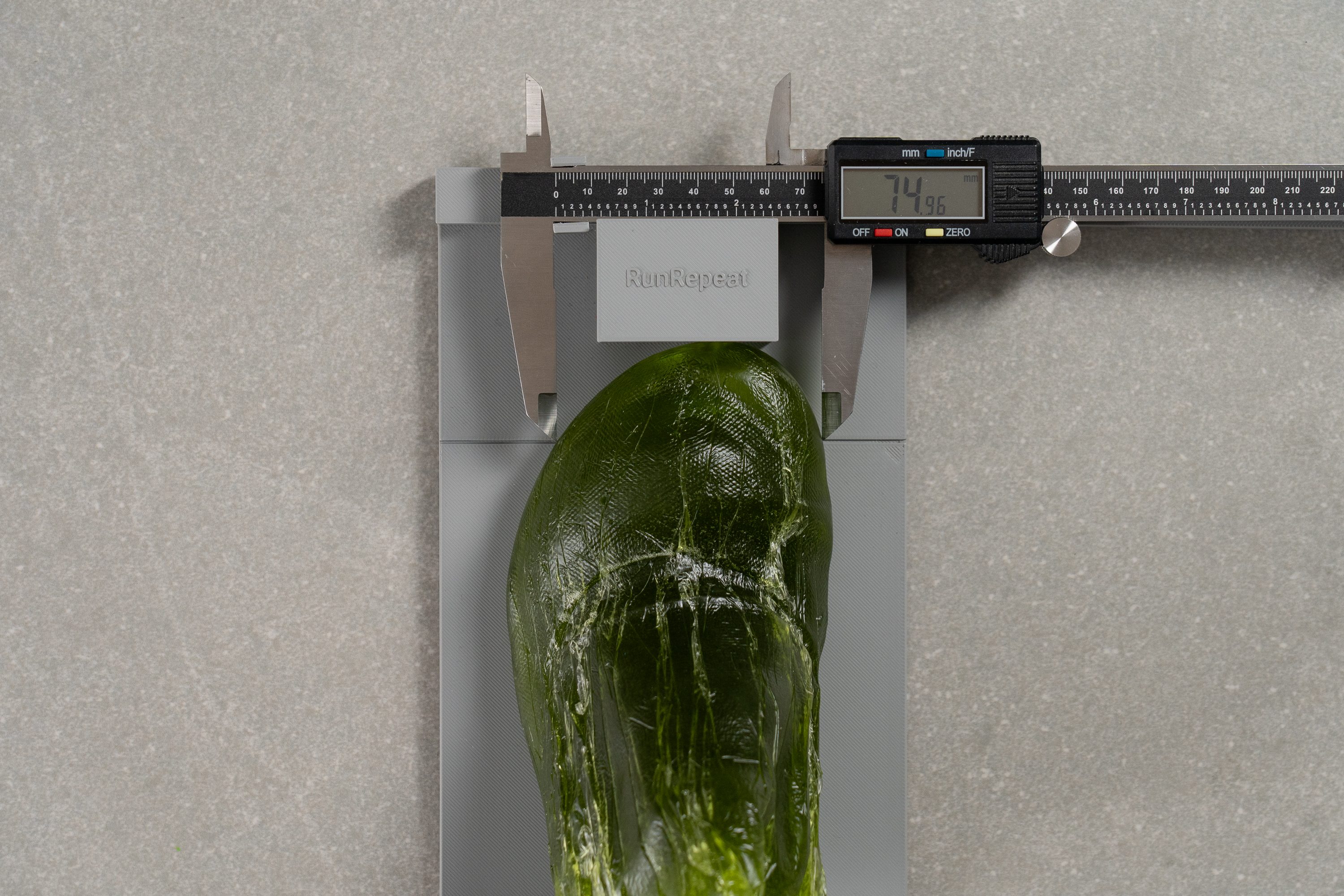
| MT10 | 75.0 mm |
| Average | 74.6 mm |
Toebox height
While the MT10 doesn't offer much horizontal wiggle room, there’s a surprising amount of vertical space for upward movement—something we rarely find in a minimalist shoe!
Through our evaluation, we discovered one of the tallest toe areas we’ve ever tested, reaching a super-high 38.3 mm. This spacious design makes it incredibly accommodating for upward toe motion.
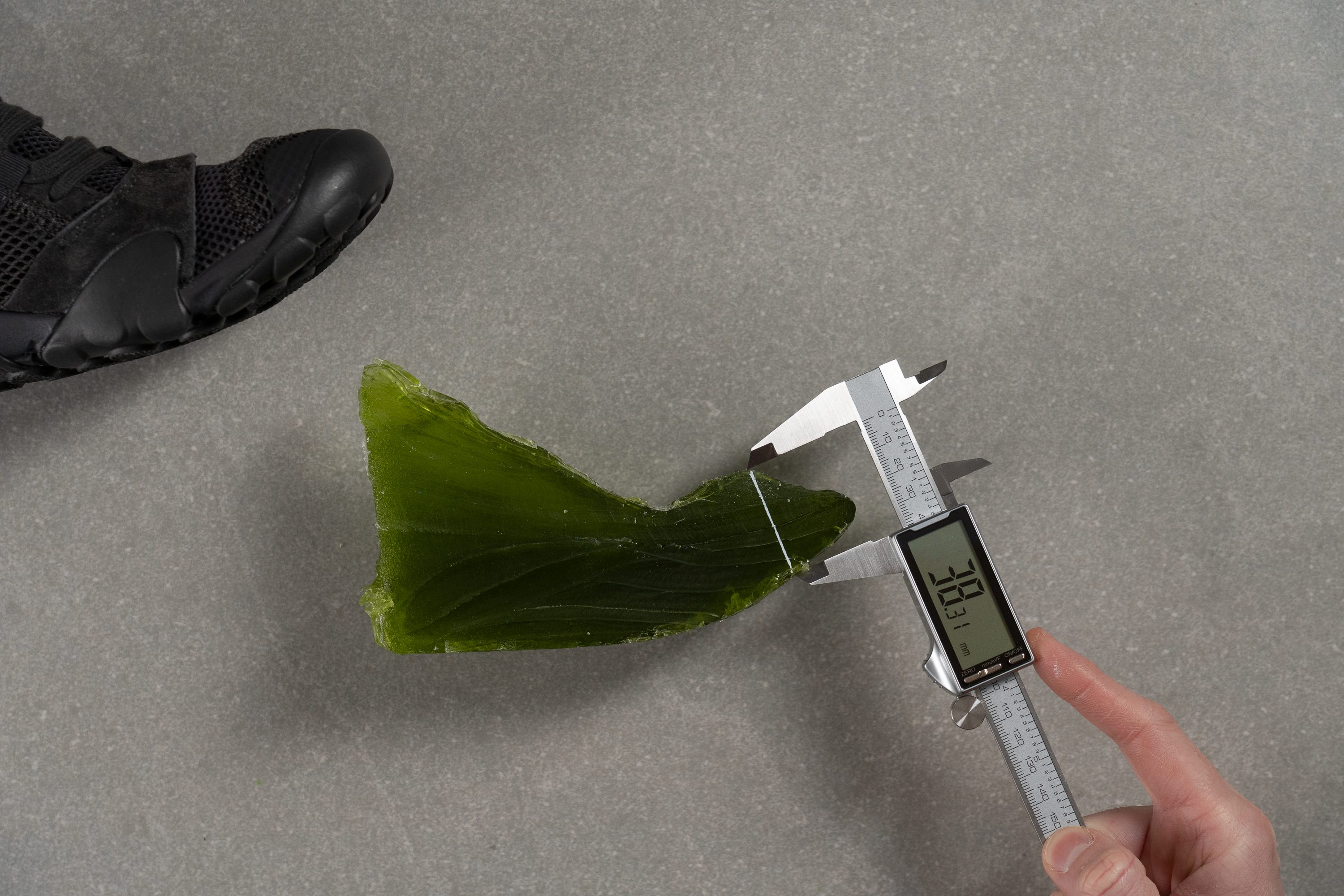
| MT10 | 38.3 mm |
| Average | 27.0 mm |
Flexibility / Stiffness
In our opinion, aside from midsole thickness, this is the most revealing test to confirm whether a shoe meets true minimalist standards.
The MT10 passed brilliantly—scoring just 3.2N in our 30-degree bend test thanks to its yoga-like, ultra-flexible build.
| MT10 | 3.2N |
| Average | 14.6N |
Weight
The MT10 is a feather-light trail running shoe, no doubt about that, as it tips our scale at just 7.05 oz or 200g. Still, for such a low-stack, slim-profile build, we think it could shave off a few more grams.
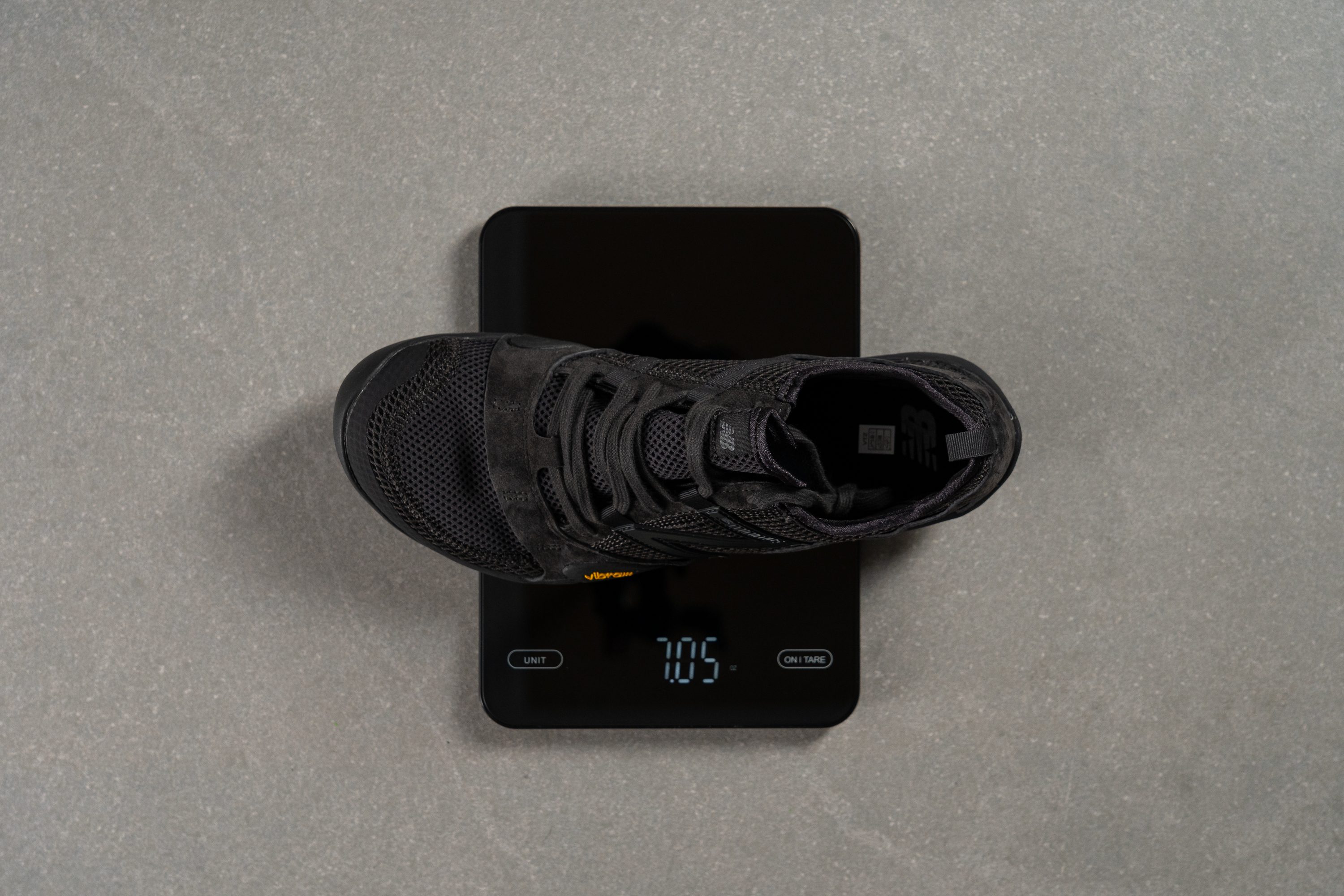
| MT10 | 7.1 oz (200g) |
| Average | 10.2 oz (289g) |
Breathability
When we first looked at the MT10’s upper, it didn’t appear especially breathable. But we never guess—we test. So, we hooked it up to our smoke machine and waited to see how much airflow made it through.
After testing, we were content with the outcome. We rated it 3/5, which is close to average for trail-ready shoes. It’s not overly airy, so we suggest pairing it with thin socks for warmer days to improve comfort.
Shining a light behind the material gave us more insight. It’s clearly not a lightweight upper, as transparency was limited in most areas, showing a denser build.
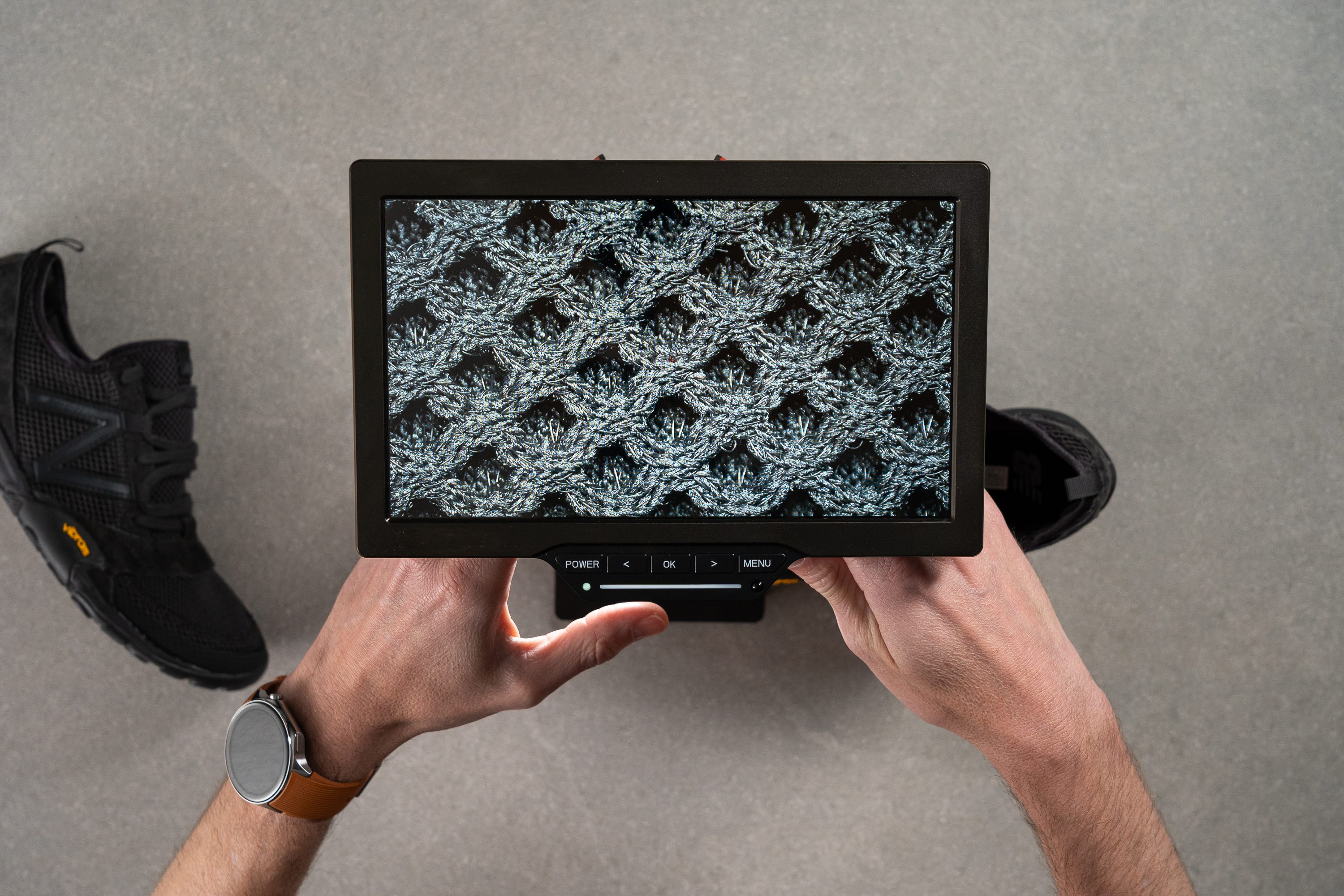
Through our microscope, we discovered a dual-layer mesh.
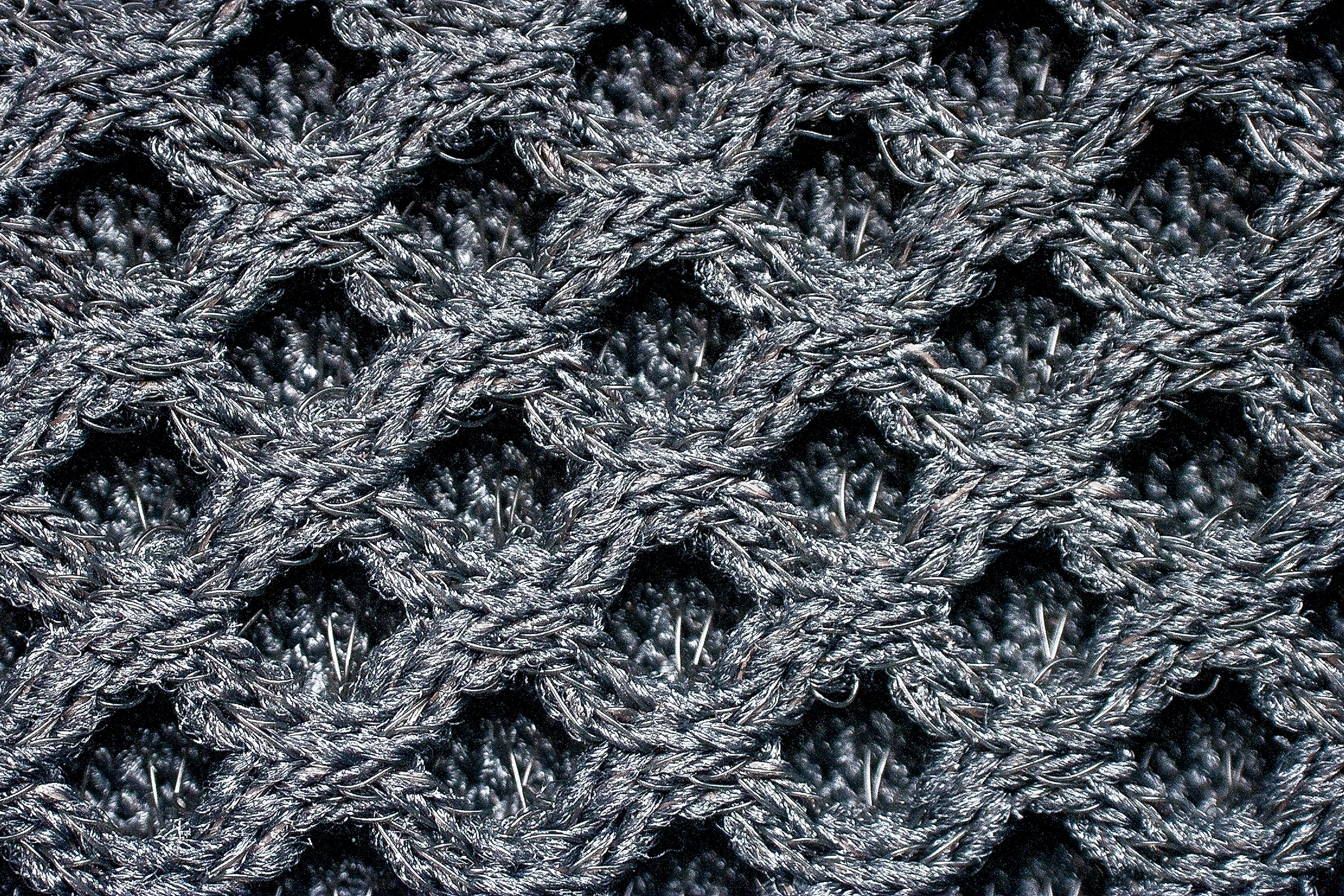
The inner lining is thick and limits airflow, but this extra protection likely prevents premature wear in rugged conditions—something we think that New Balance considered carefully.
We were pleasantly surprised by the upper’s stretchy feel. For a minimalist shoe, the rear of the MT10 feels exceptionally cushioned—ideal for runners who want the best of both worlds.
| MT10 | 3 |
| Average | 3.2 |
Stability
Lateral stability test
Minimalist shoes often feel grounded and inherently stable thanks to their ultra-low profile, but at the same time, they can feel unsteady for some runners due to the total absence of support-enhancing features in the design.
From our perspective, the MT10 offers top stability that works well for runners with neutral mechanics thanks to its low-stack midsole. However, we found that any side-to-side movement is not controlled—this shoe won’t help if your feet start to roll or wobble.
Torsional rigidity
For a shoe to qualify as a minimalist model, one key requirement is ultra-low torsional rigidity—in simple terms, it should twist with ease. Fortunately, the MT10 nailed this test, scoring just 1 out of 5.
| MT10 | 1 |
| Average | 3.6 |
Heel counter stiffness
We also expect a minimalist shoe to feature an unstructured heel counter, allowing tendons and muscles to handle foot alignment and stability. The MT10 passed this test as well, scoring another 1 out of 5.
| MT10 | 1 |
| Average | 3 |
Midsole width - forefoot
After some hands-on tests, we grabbed our calipers again to measure the MT10's midsole. In the forefoot, we recorded just 104.4 mm—a below-average figure that, in our view, perfectly matches its lightweight construction perfectly.
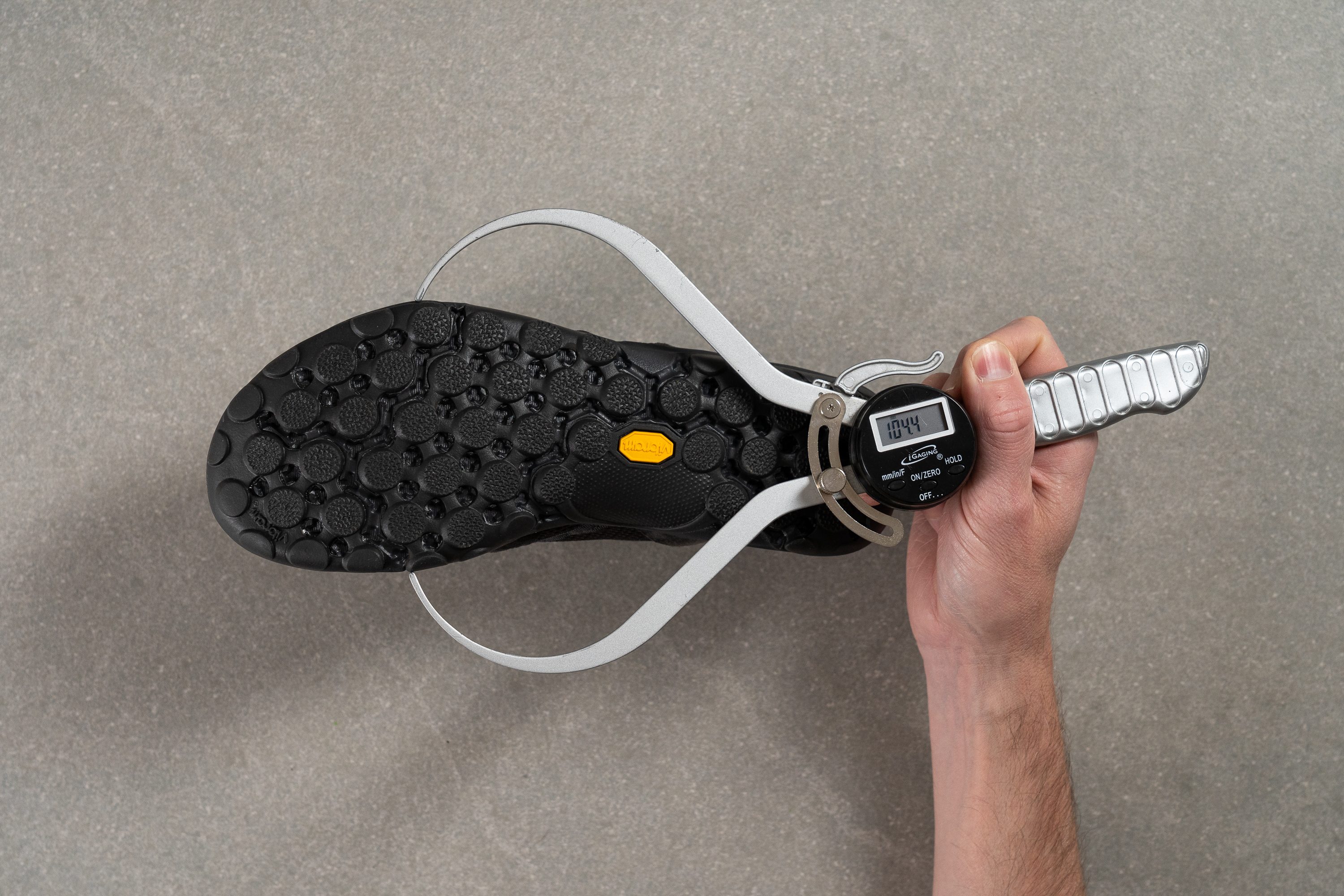
| MT10 | 104.4 mm |
| Average | 112.8 mm |
Midsole width - heel
The heel is ultra-narrow, closely mimicking the natural shape of the human foot, with zero midsole flare to assist.
As we mentioned earlier, stability depends on you—and this minimalist 72.0 mm measurement confirms it.
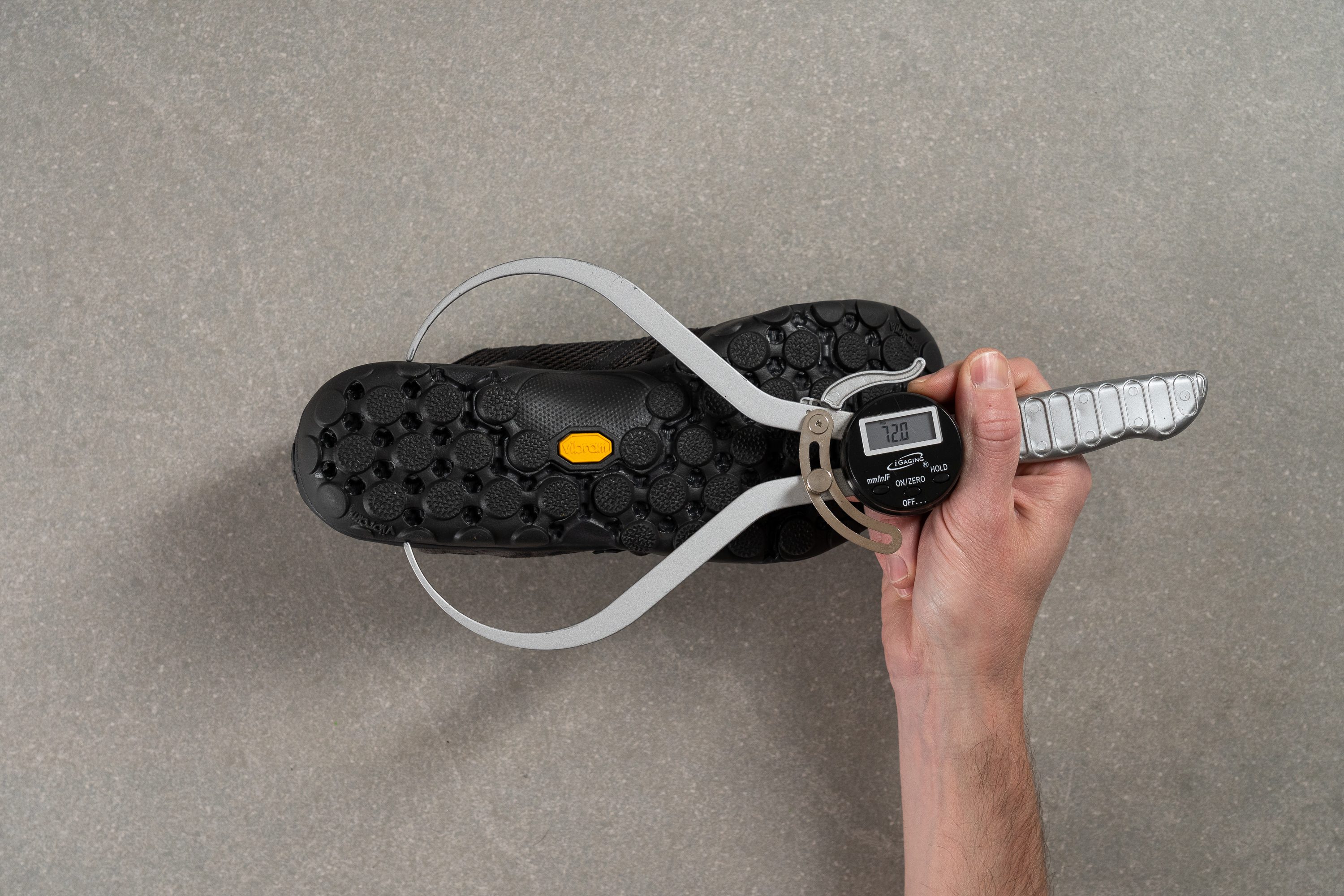
| MT10 | 72.0 mm |
| Average | 89.8 mm |
Durability
Toebox durability
Thanks to the dual-layer mesh design, we recorded an outstanding durability score—earning a rare 5/5 in our lab and joining an elite group of ultra-tough uppers.
| MT10 | 5 |
| Average | 3.1 |
Heel padding durability
The heel counter didn’t match the upper’s durability, but it still achieved a solid 3/5 score. That's enough to ensure it holds up well for the majority of runners.
| MT10 | 3 |
| Average | 3 |
Outsole hardness
The outsole of the New Balance MT10 features a Vibram compound (84.0 HC) with a rare circular-lug pattern that maximizes surface contact. We think it’s designed for solid grip across mixed terrains—from smooth pavement to rocky trails.
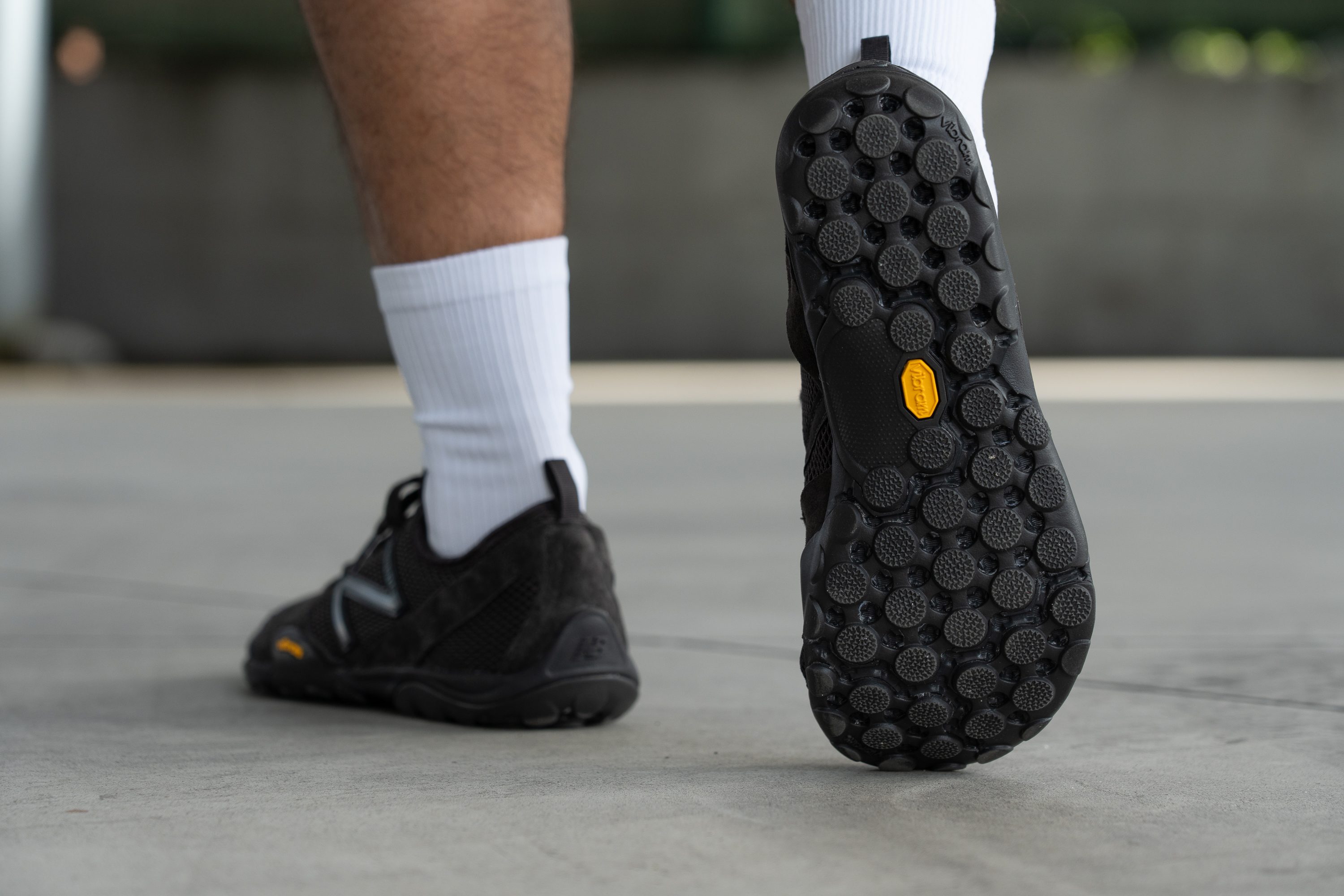
Each lug is small and tightly packed, offering a highly-flexible yet grippy underfoot feel. According to our assessment, this layout favors natural movement, which is essential in a minimalist running shoe.
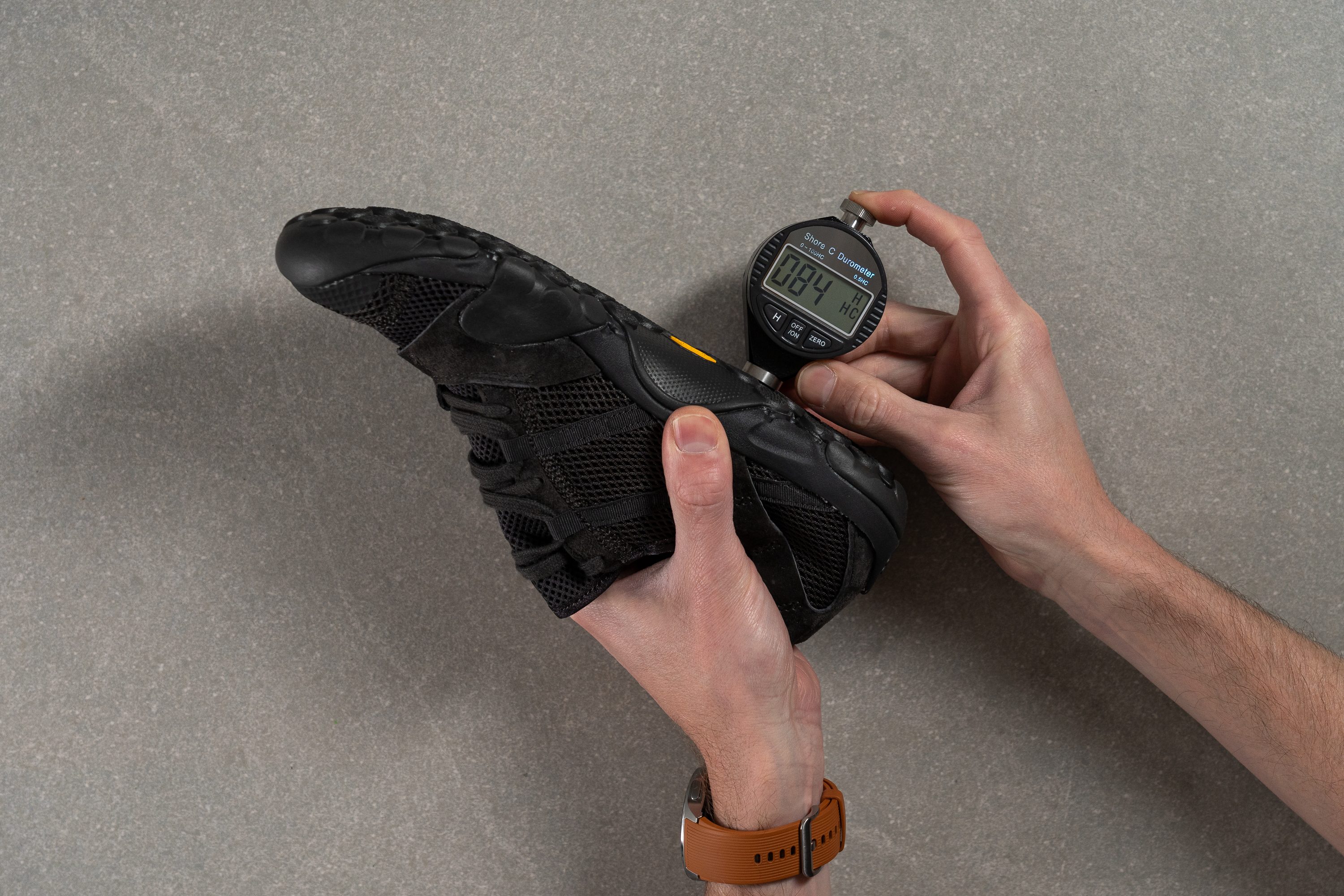
| MT10 | 84.0 HC |
| Average | 85.8 HC |
Outsole durability
Vibram outsoles typically perform well in durability tests, and this one was no exception. After using the Dremel, we measured just 0.9 mm of wear—an excellent result that easily passes our benchmark.
| MT10 | 0.9 mm |
| Average | 0.9 mm |
Outsole thickness
The outsole (lugs included) measures 4.3 mm thick, providing solid ground protection. That’s especially important for the MT10, which lacks the extra cushioning found in high-stack shoes.
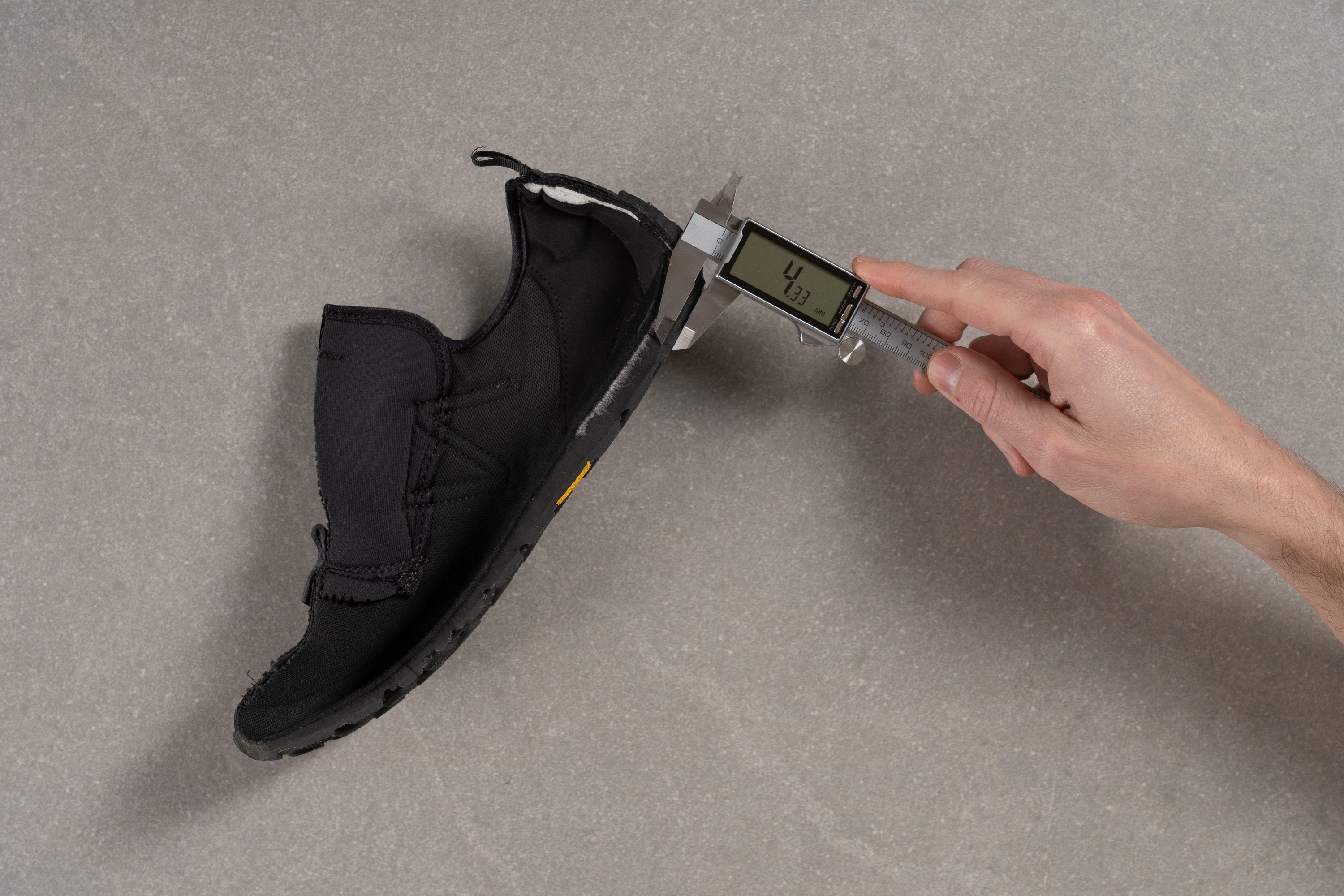
| MT10 | 4.3 mm |
| Average | 2.2 mm |
Misc
Removable insole
Unlike most shoes, the insole of the MT10 is not removable.
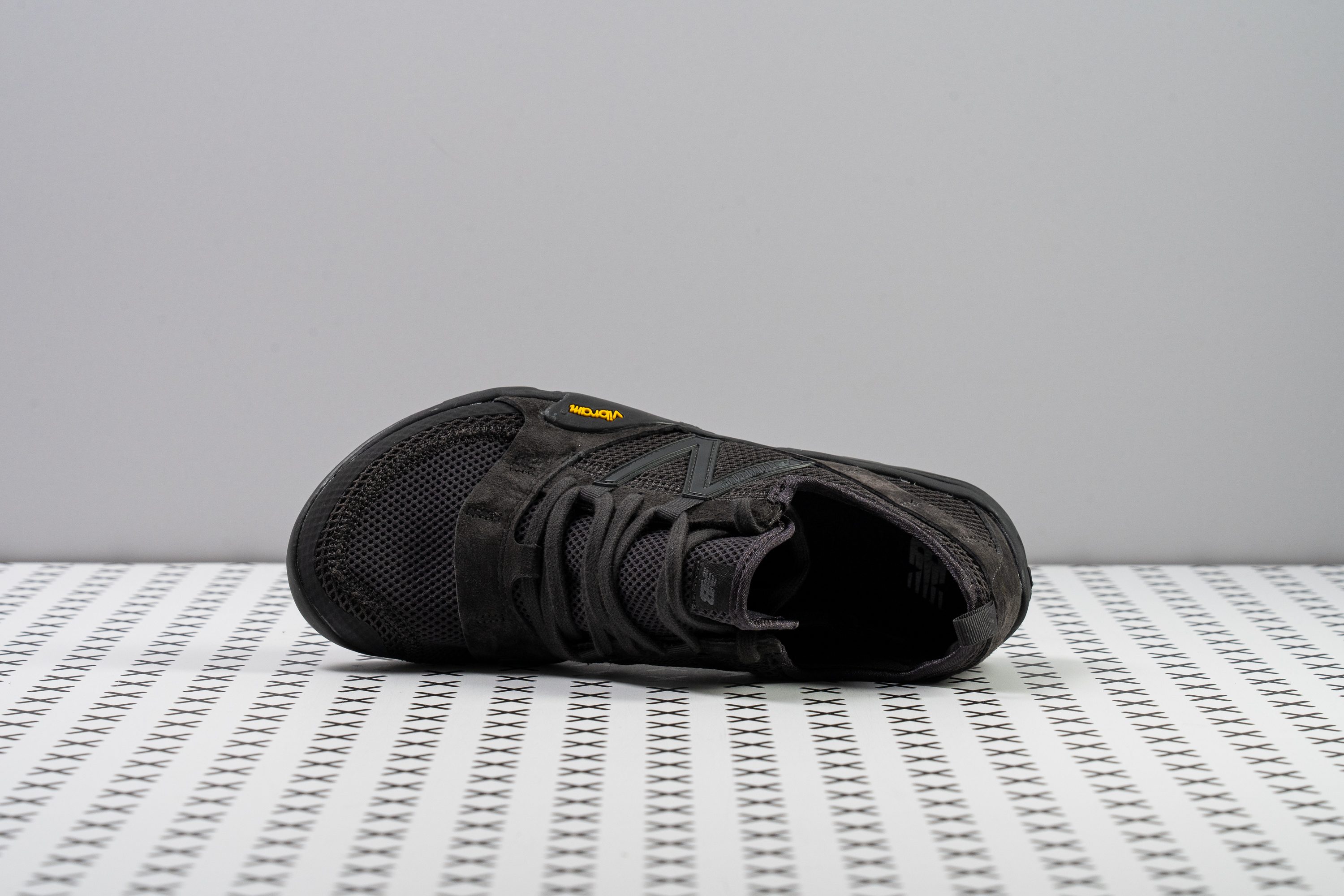
| MT10 | No |
Midsole softness in cold (%)
Under cold temperatures, the MT10 held up well for being EVA based, firming up by just 24%. And since it already feels quite hard, we’re pretty sure you won’t notice the extra firmness creeping in.
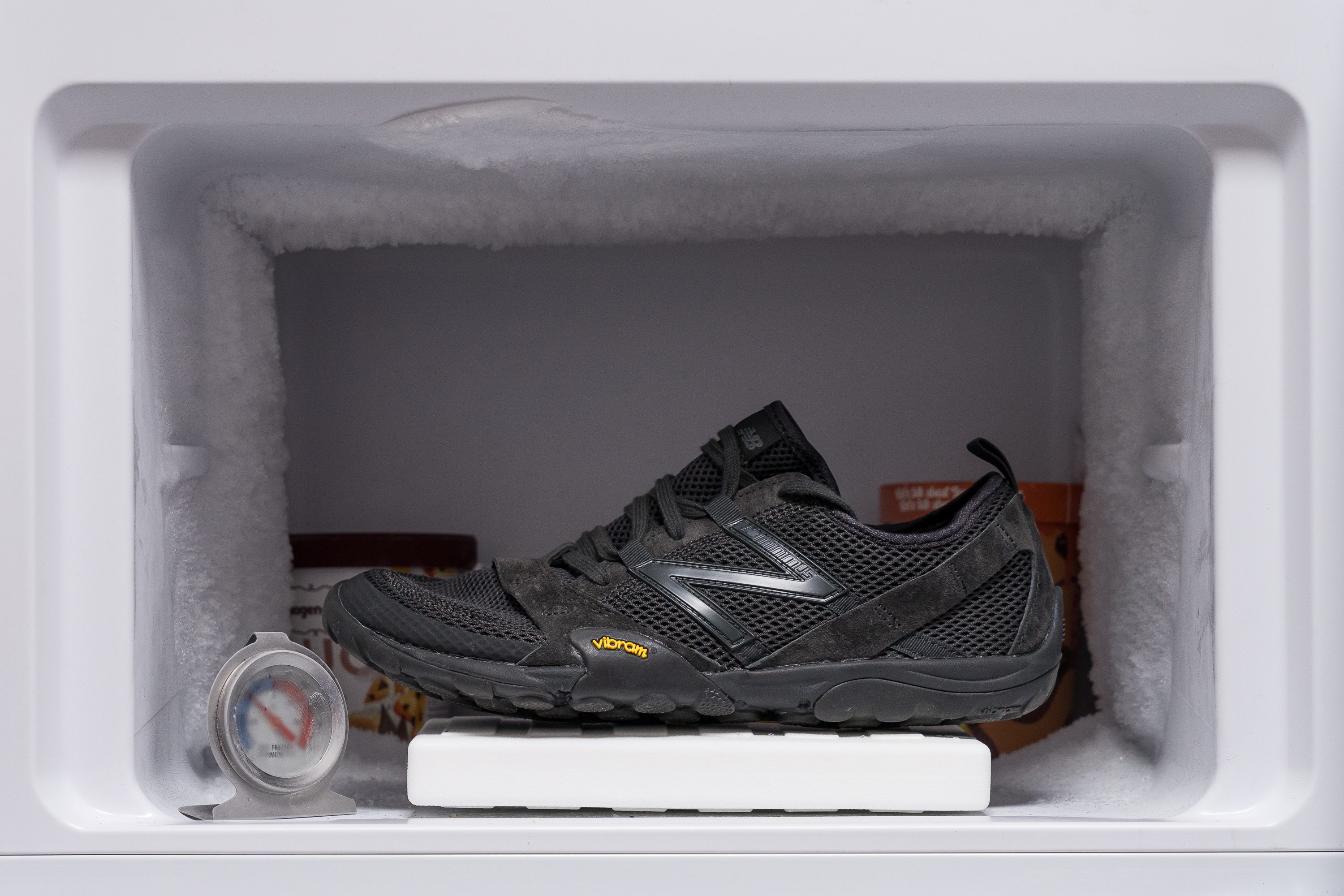
| MT10 | 24% |
| Average | 26% |
Reflective elements
The MT10 skips reflective elements, which didn’t catch us off guard—after all, it’s a shoe that lives by the “less is more” mantra. Still, we believe this would’ve been a smart exception to make.
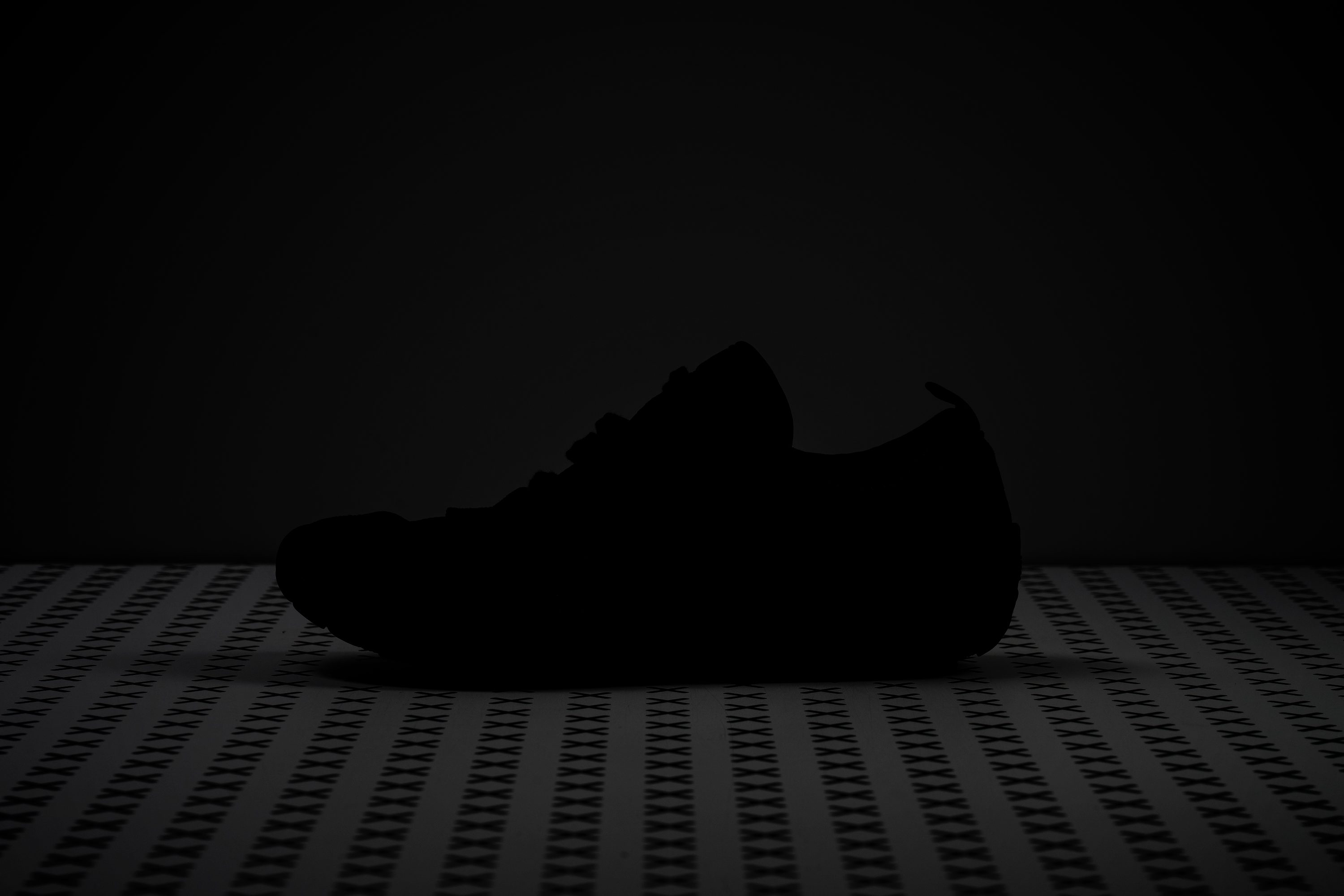
| MT10 | No |
Tongue padding
The tongue, just like most parts of the MT10, follows a stripped-down, no-frills design. It packs only 1.3 mm of padding, so don't expect a cushy step-in or pillow-like feel.
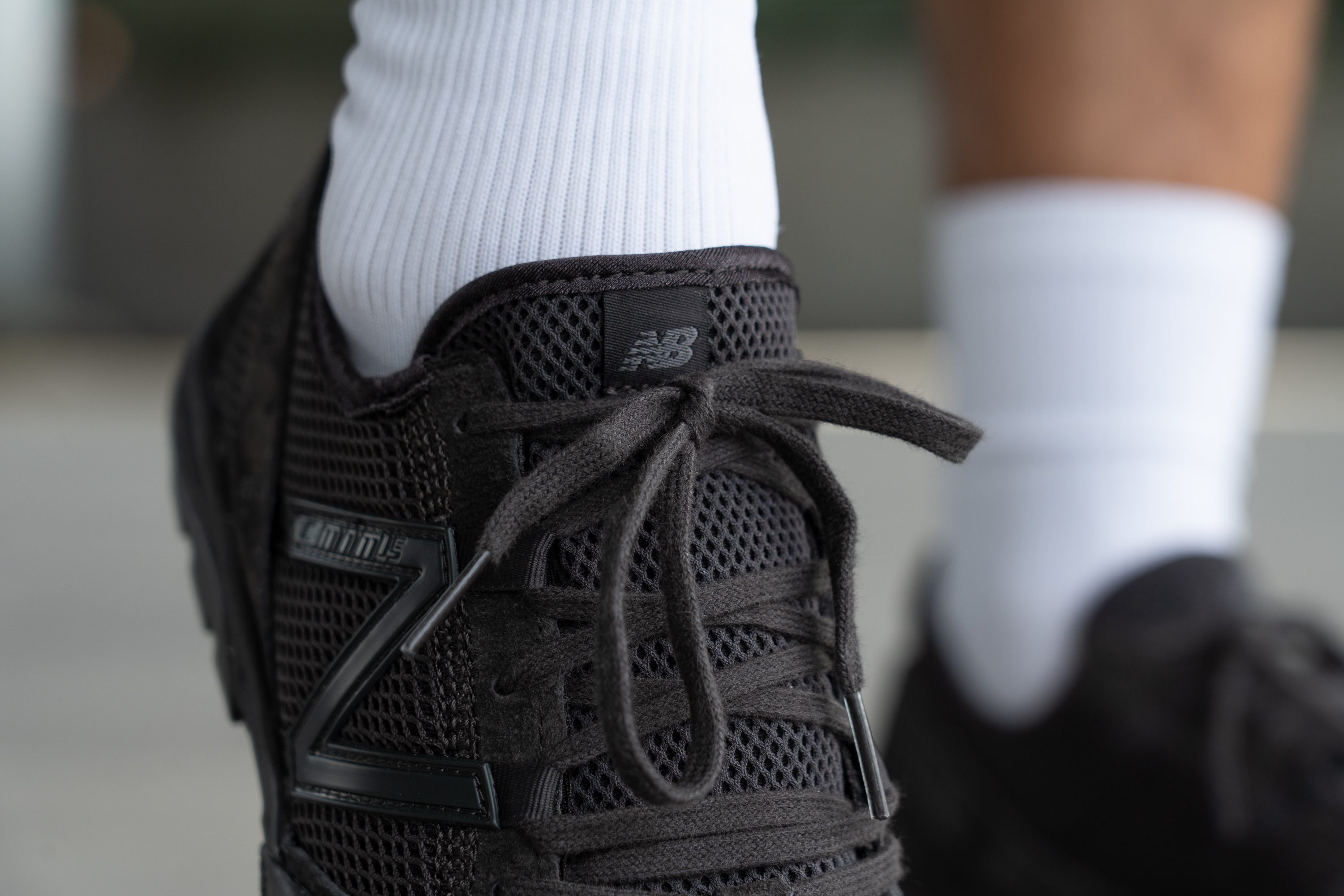
The lacing setup also leans toward the simple side, featuring flat laces and no extra eyelet for a runner's knot.
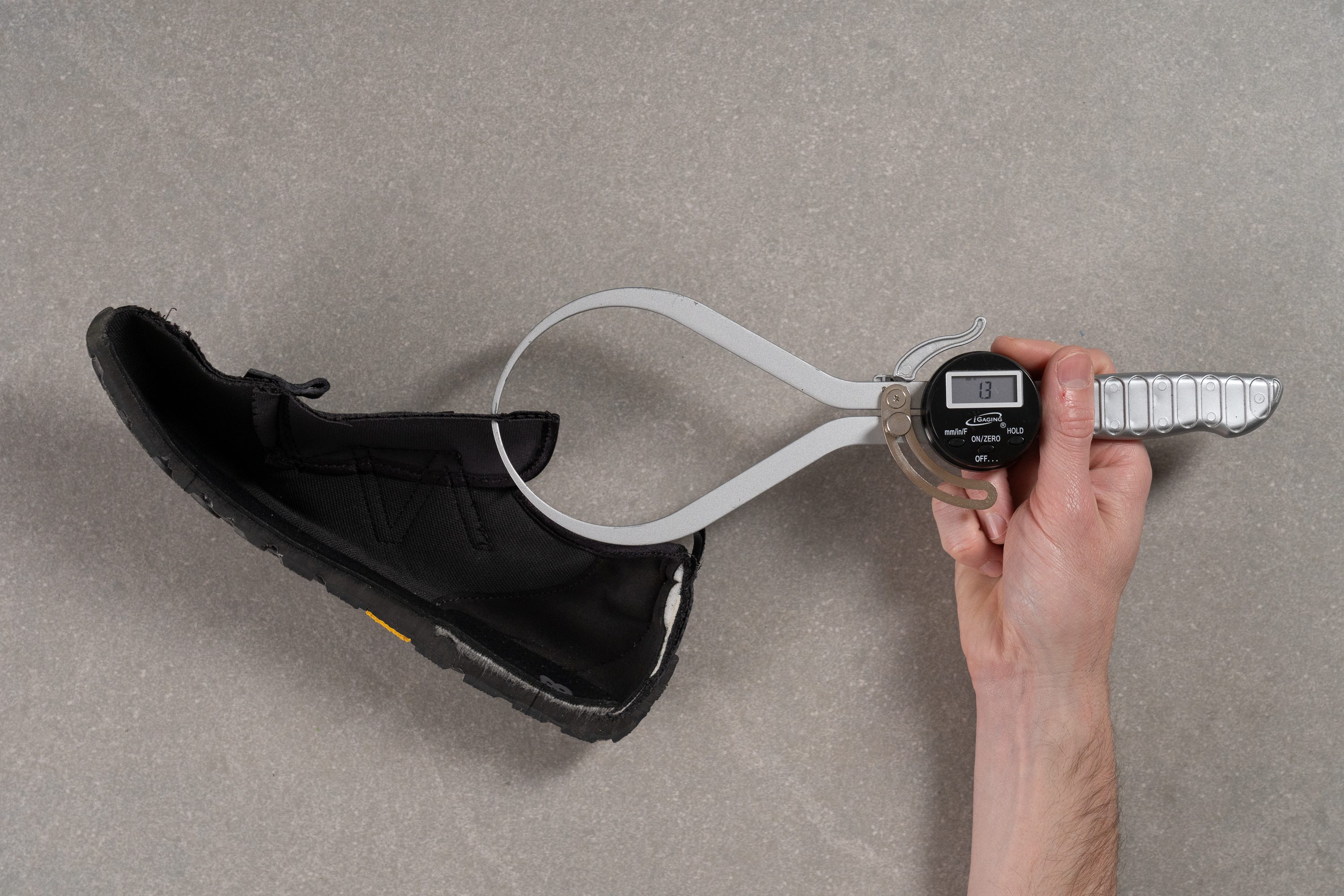
| MT10 | 1.3 mm |
| Average | 6.4 mm |
Tongue: gusset type
While the MT10 skips the usual tongue loop, it doesn’t need one, because its sock-like construction keeps everything locked in place with zero shifting.

| MT10 | Sock like |
Price
We think the MT10 is priced competitively within the minimalist market—especially considering it features a Vibram outsole. From our perspective, there's really nothing to complain about here.
| MT10 | $110 |
| Average | $152 |
Heel tab
The back of the shoe includes a finger-loop heel tab that makes slipping into the snug, sock-like upper much easier.
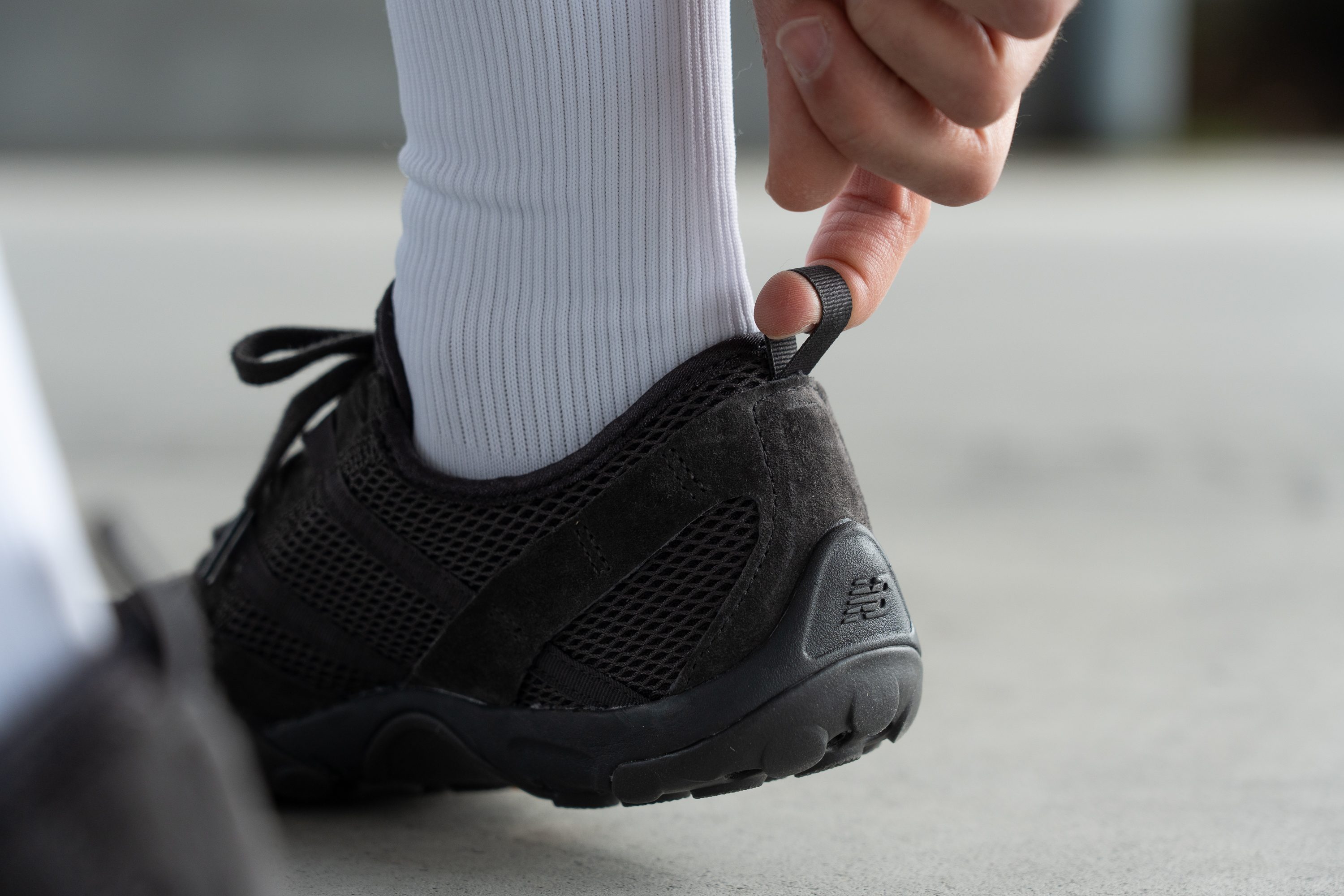
| MT10 | Finger loop |

